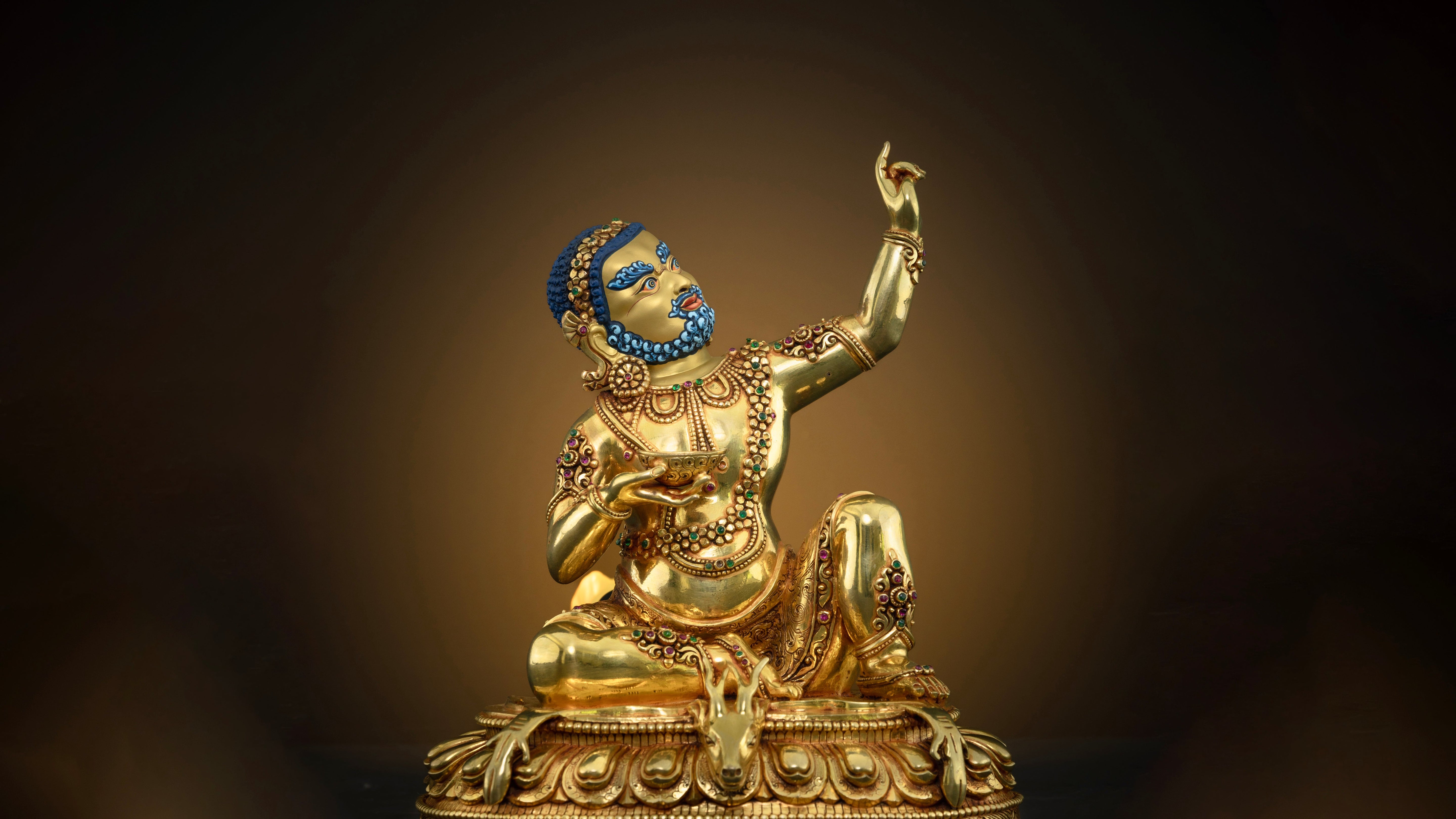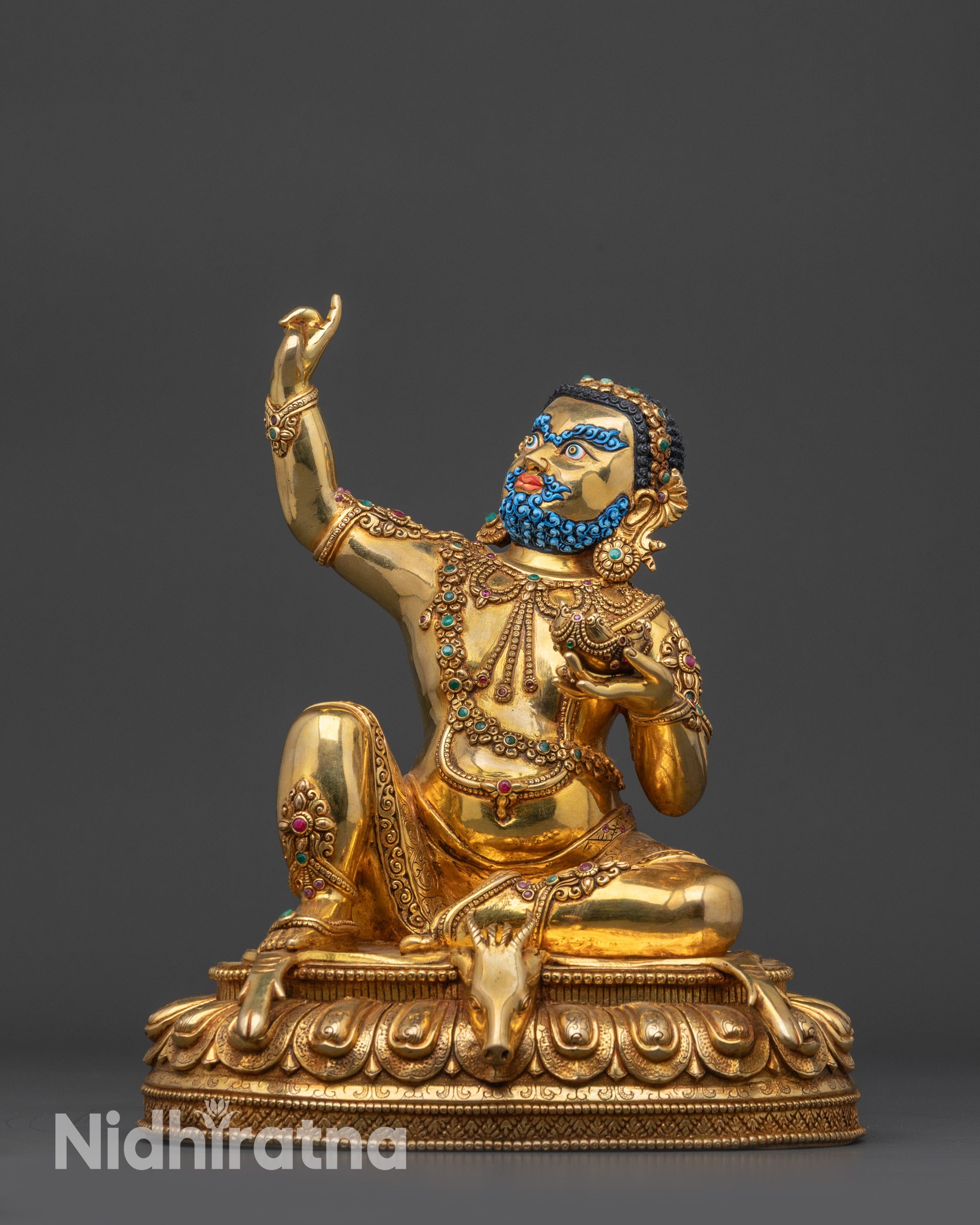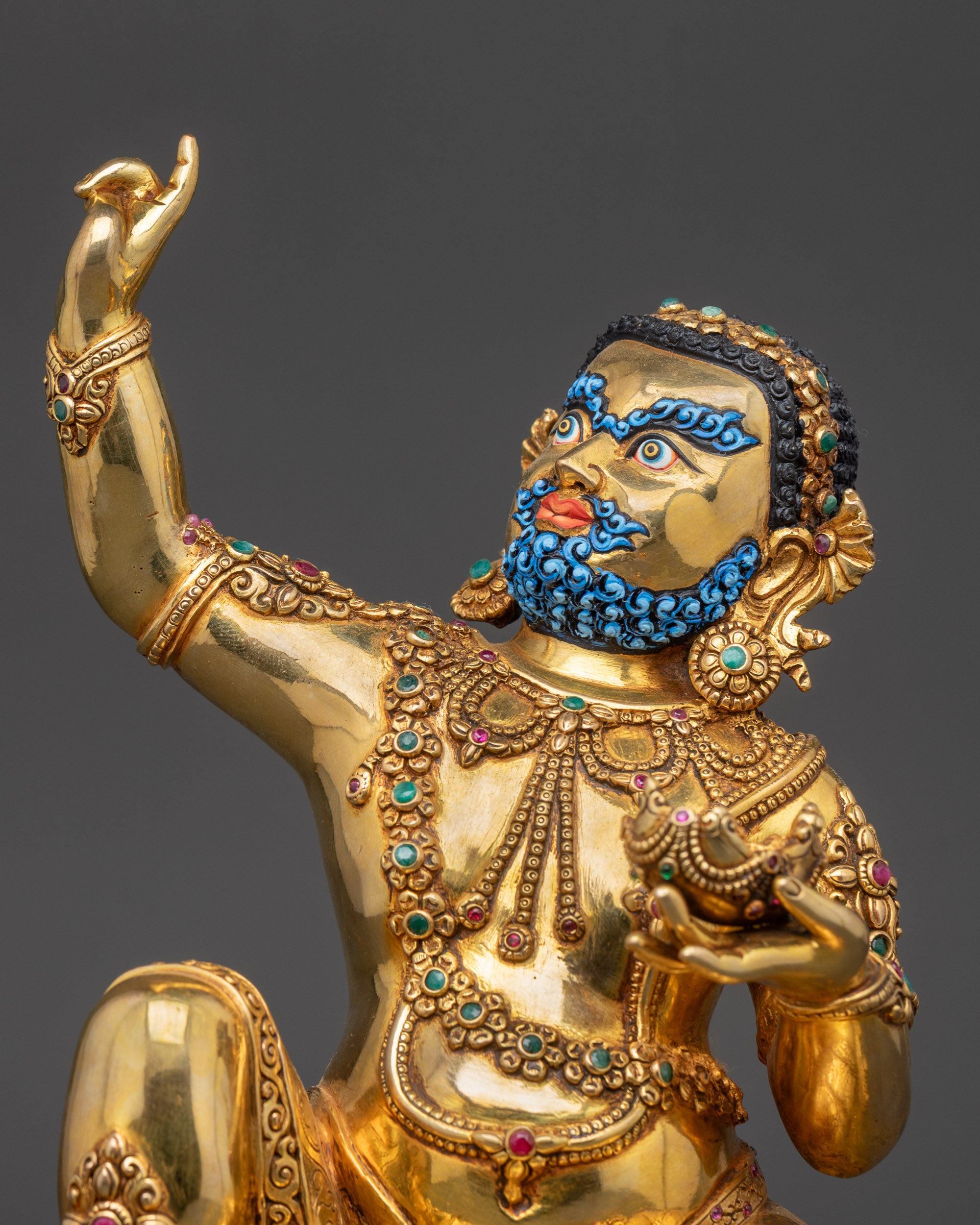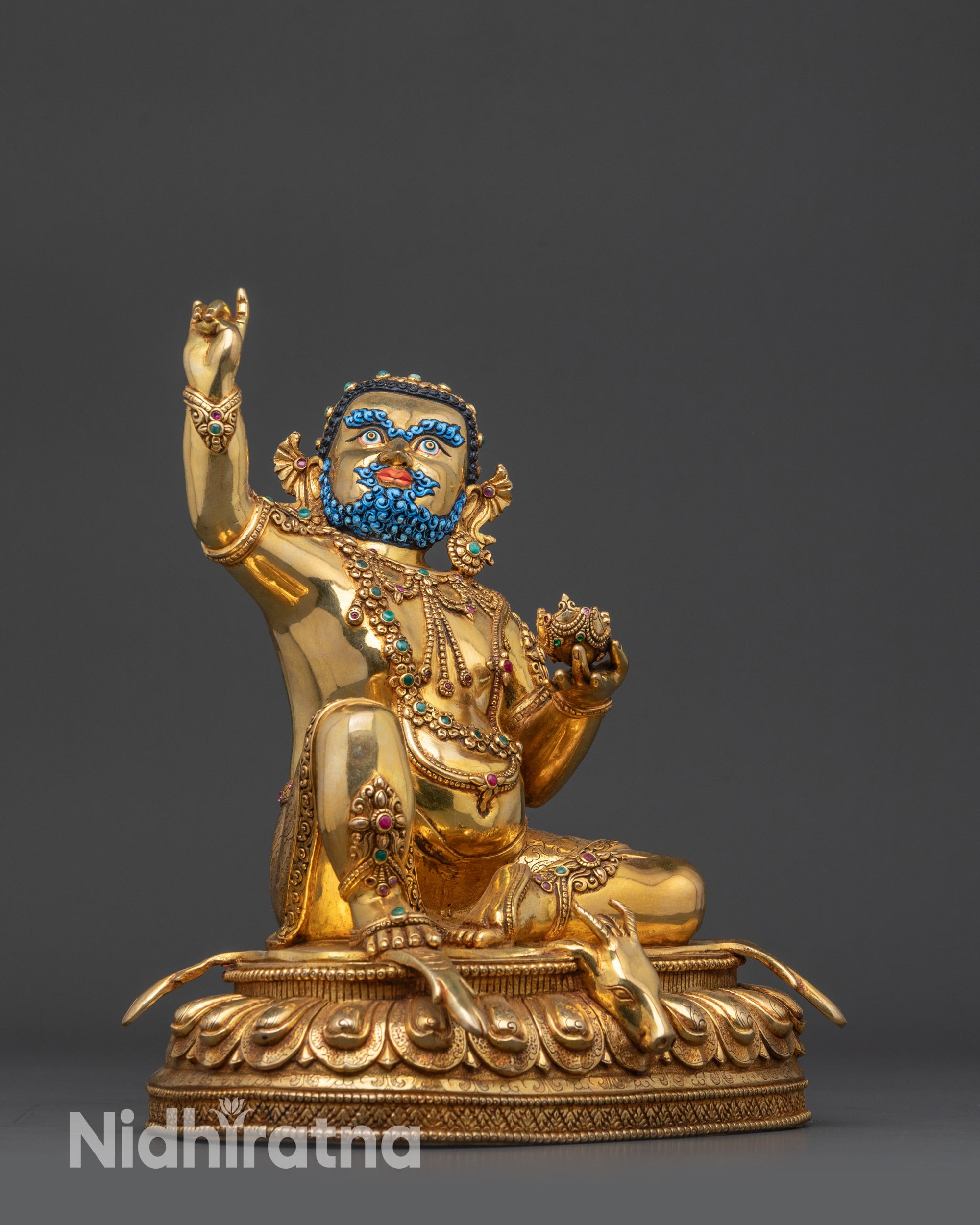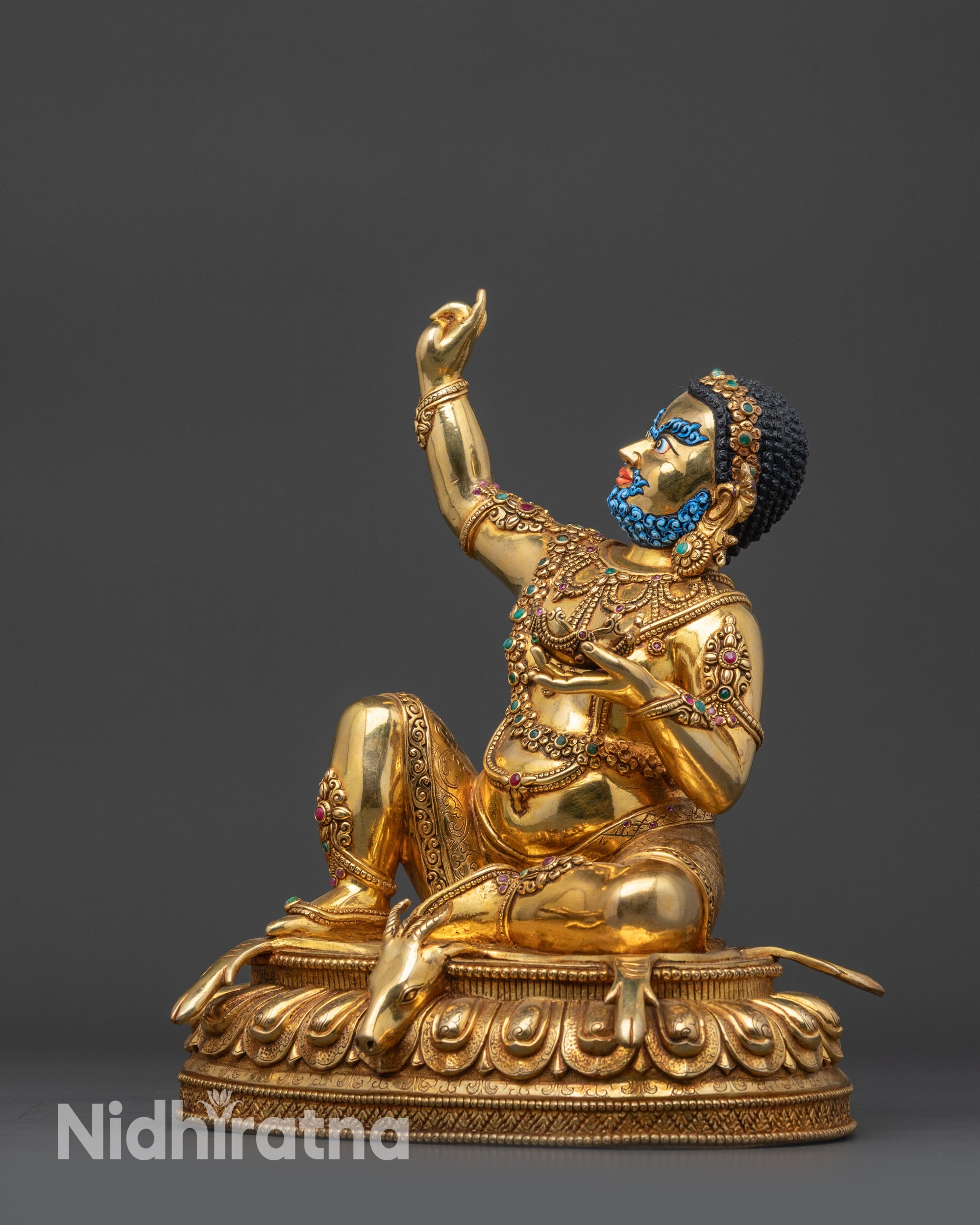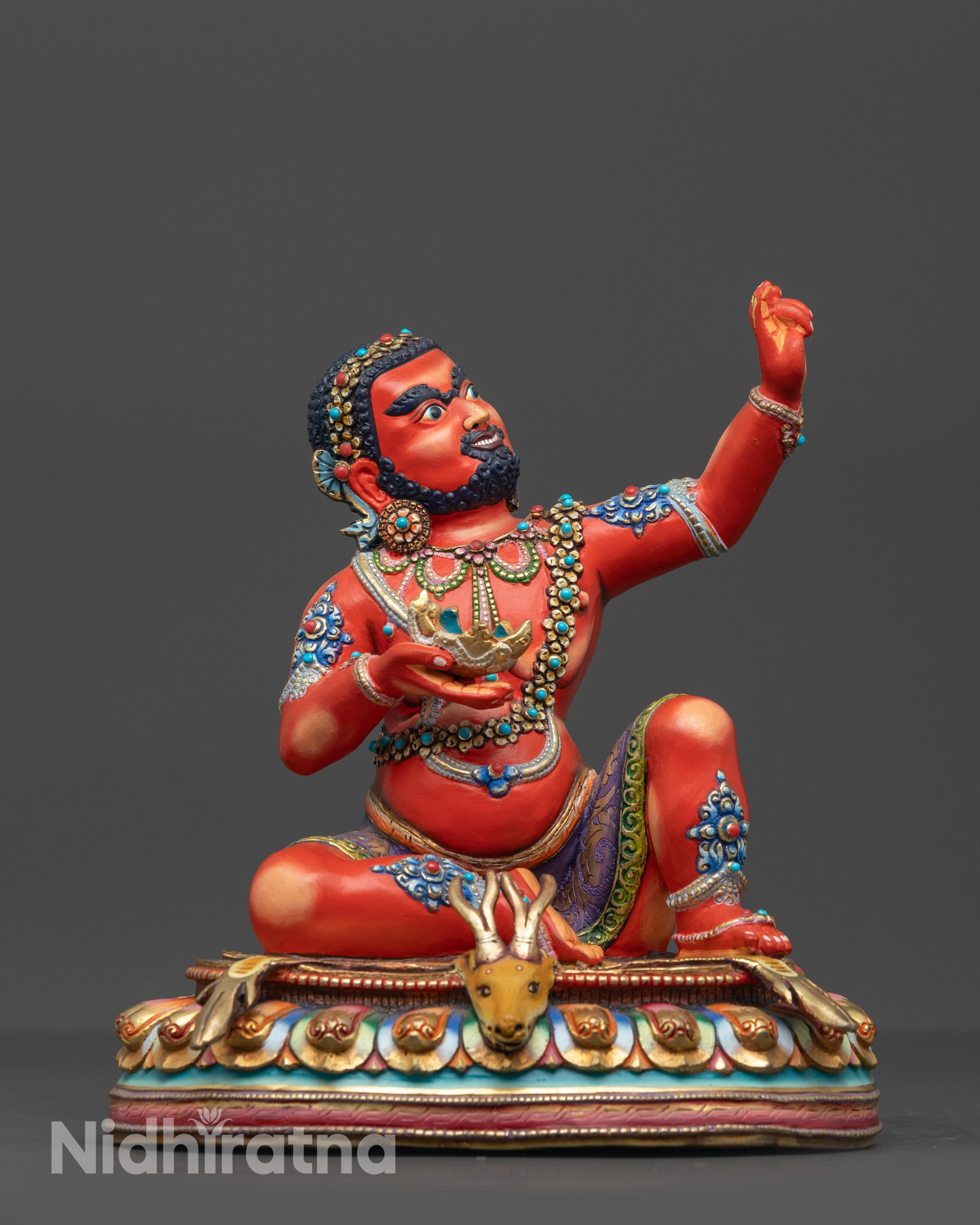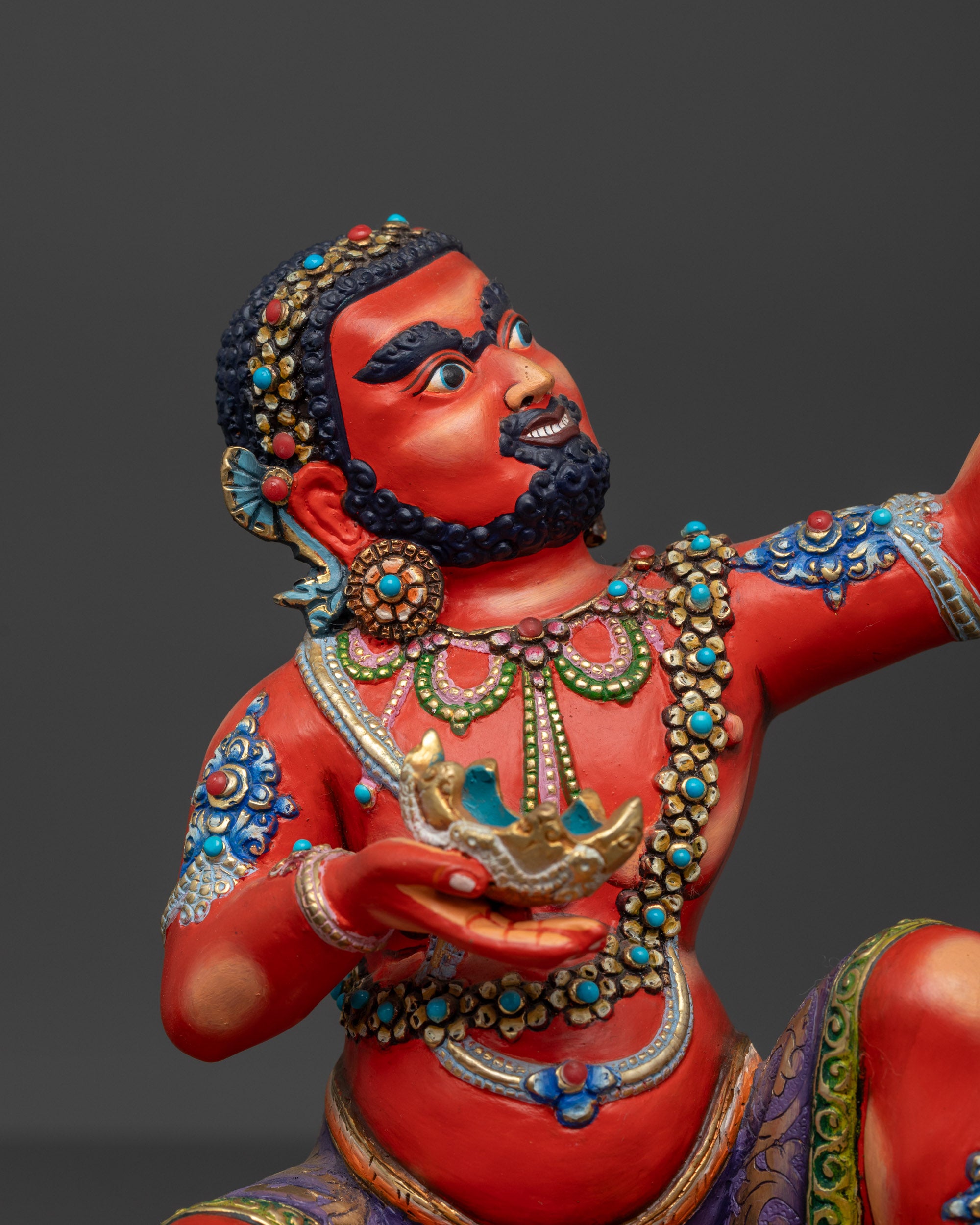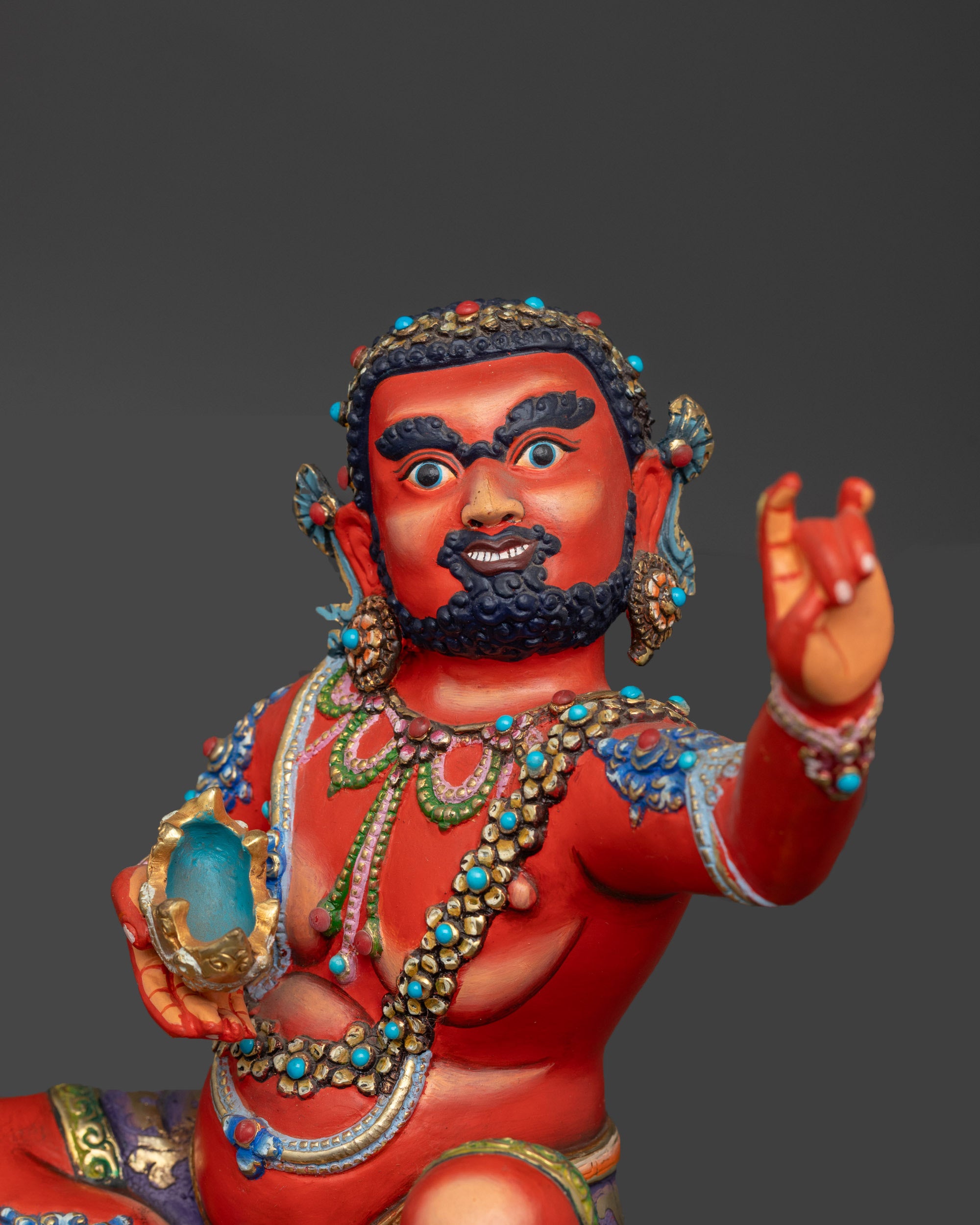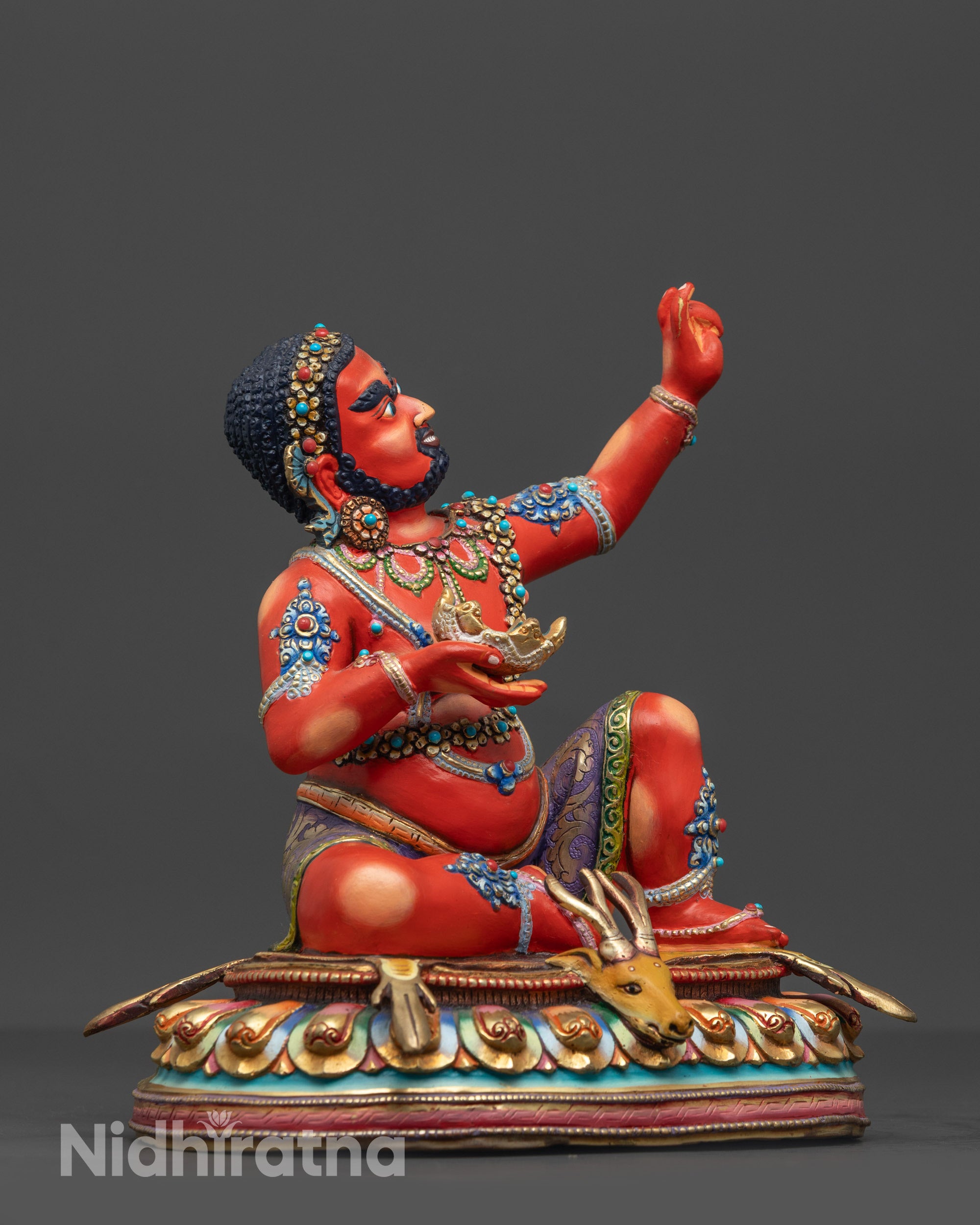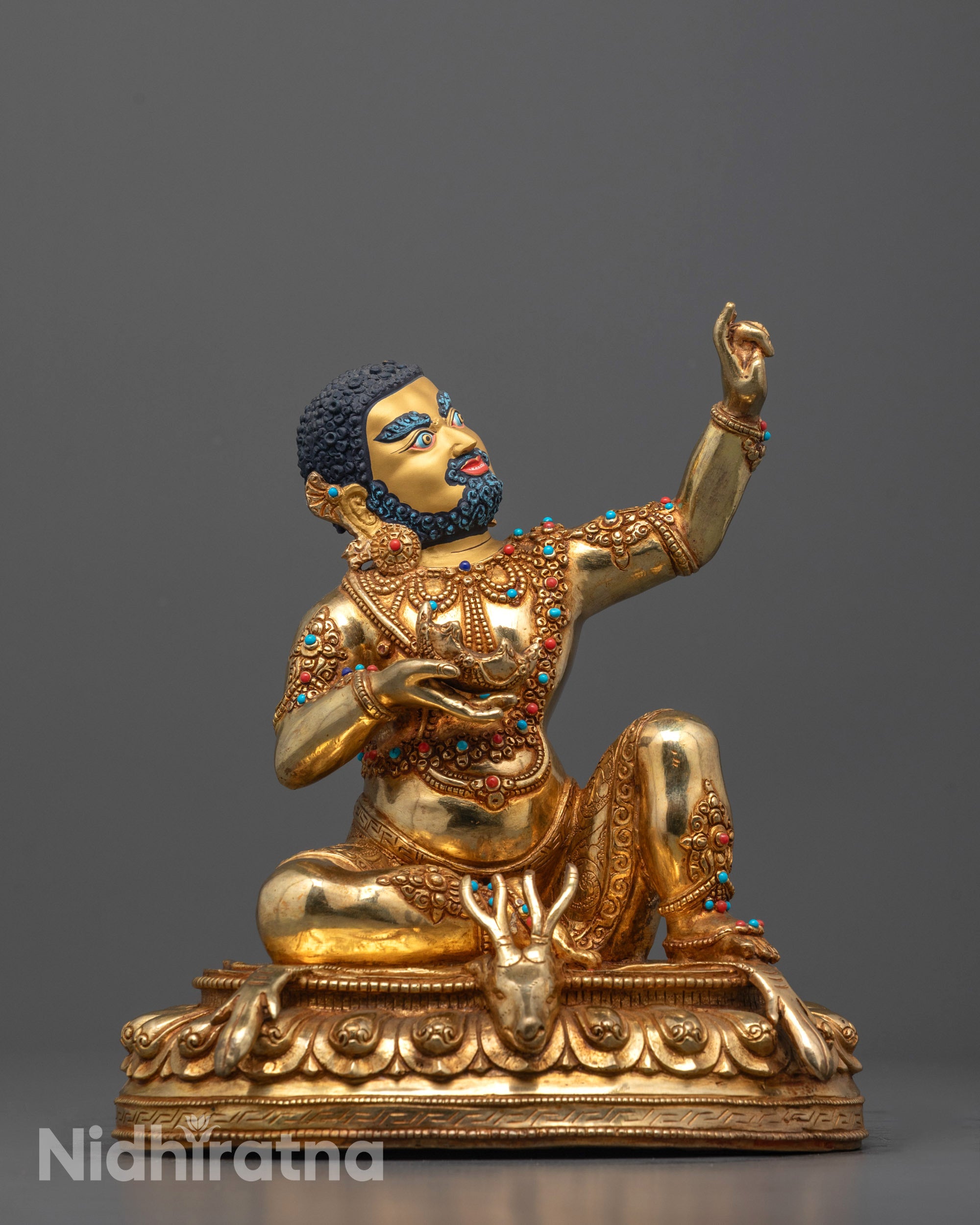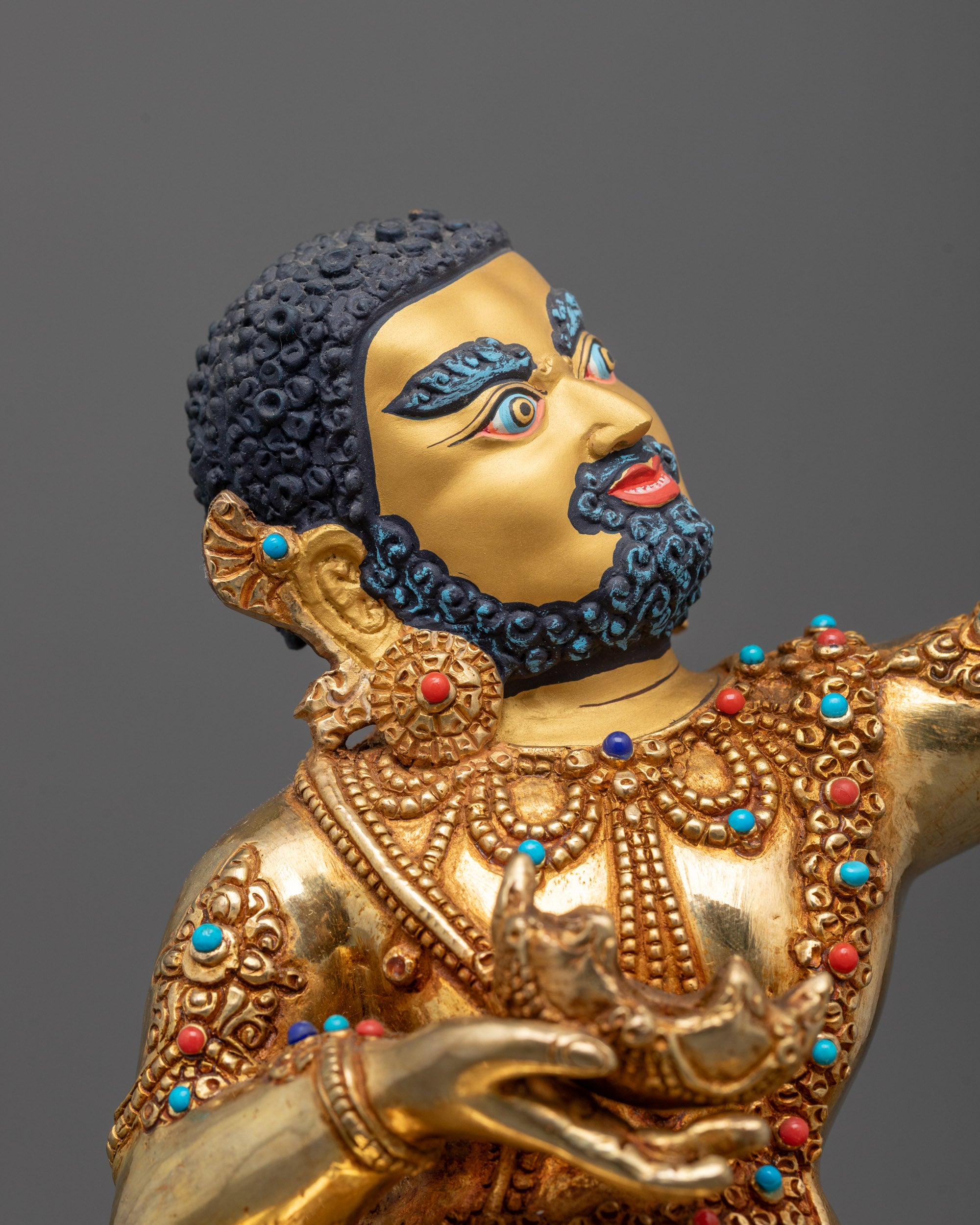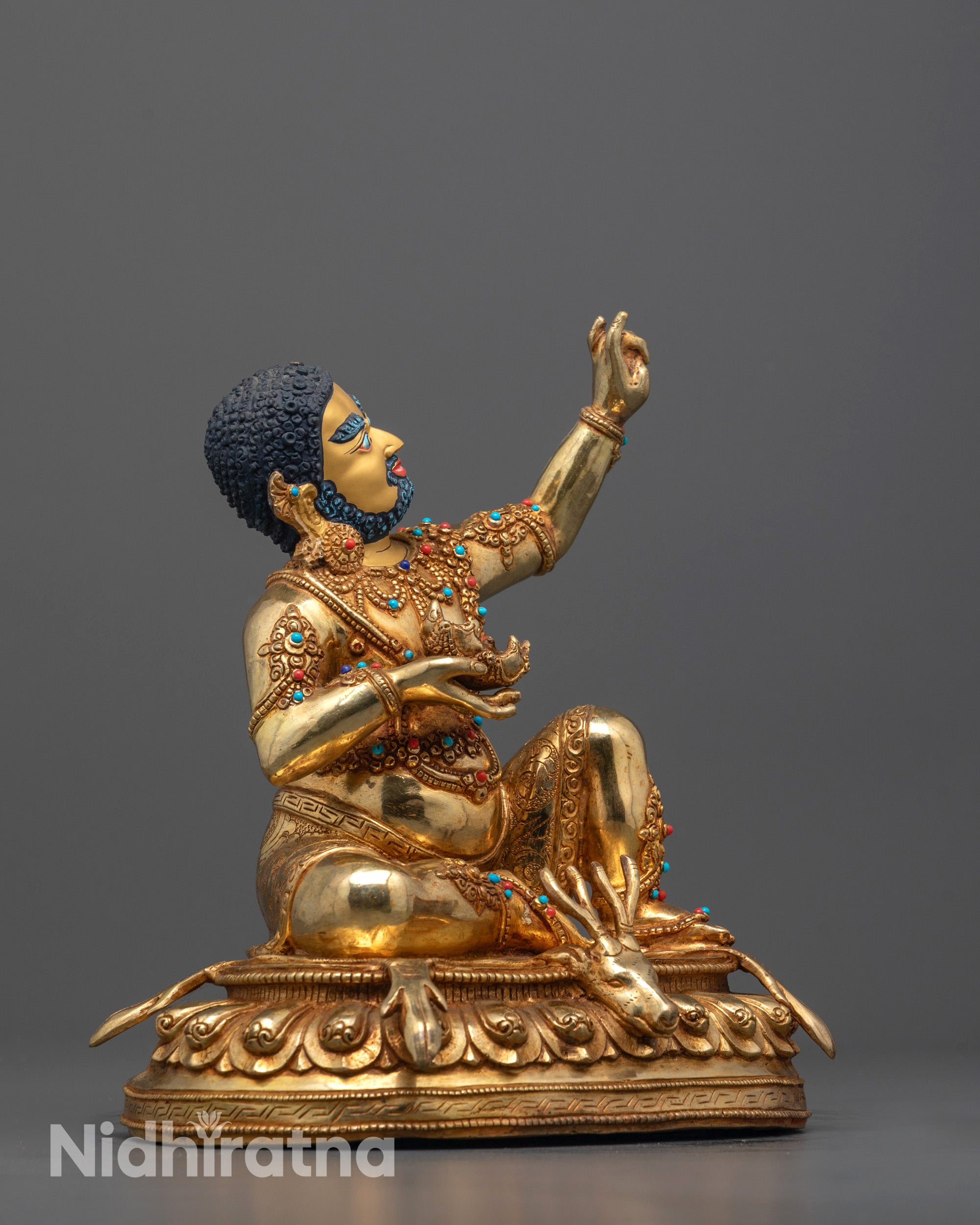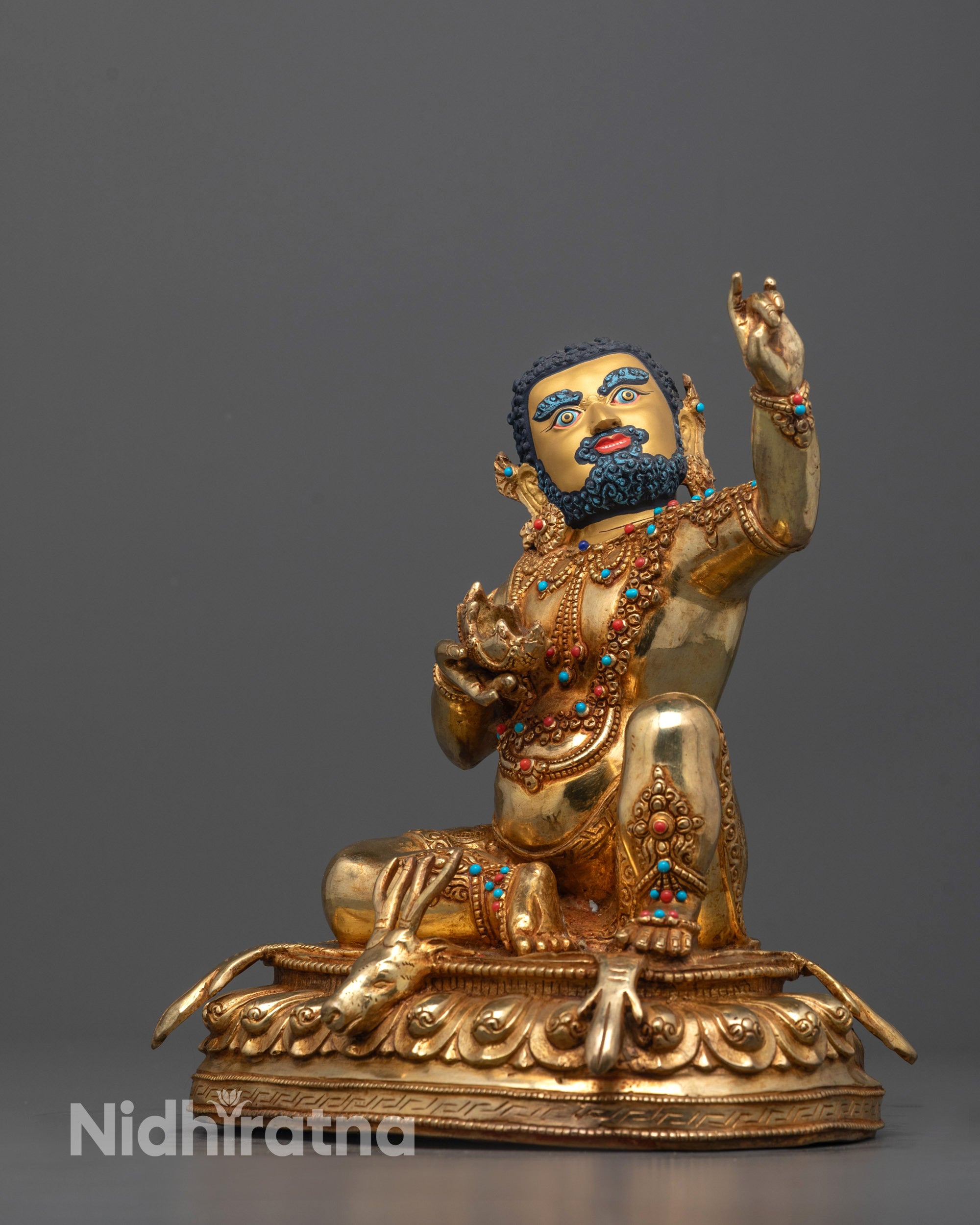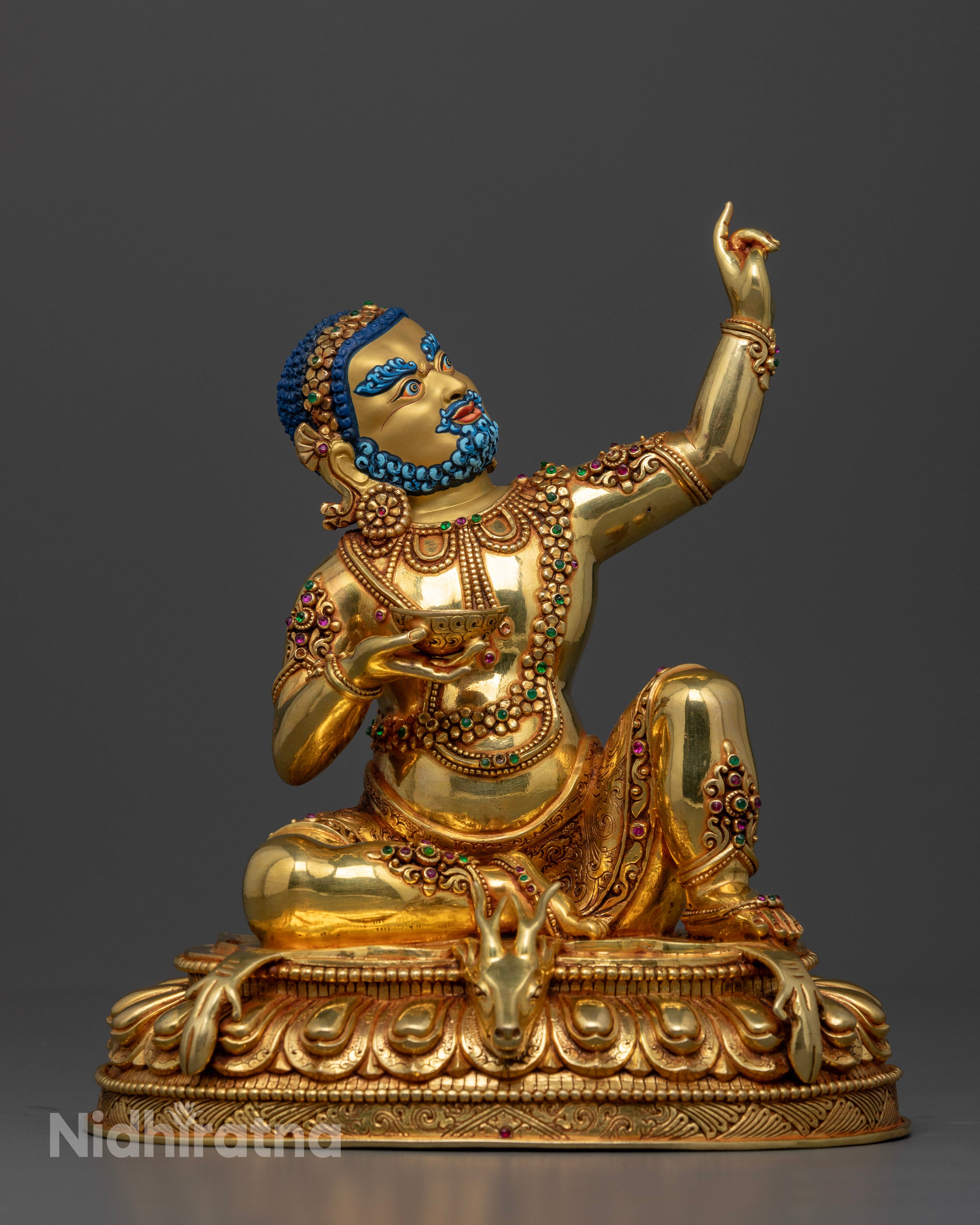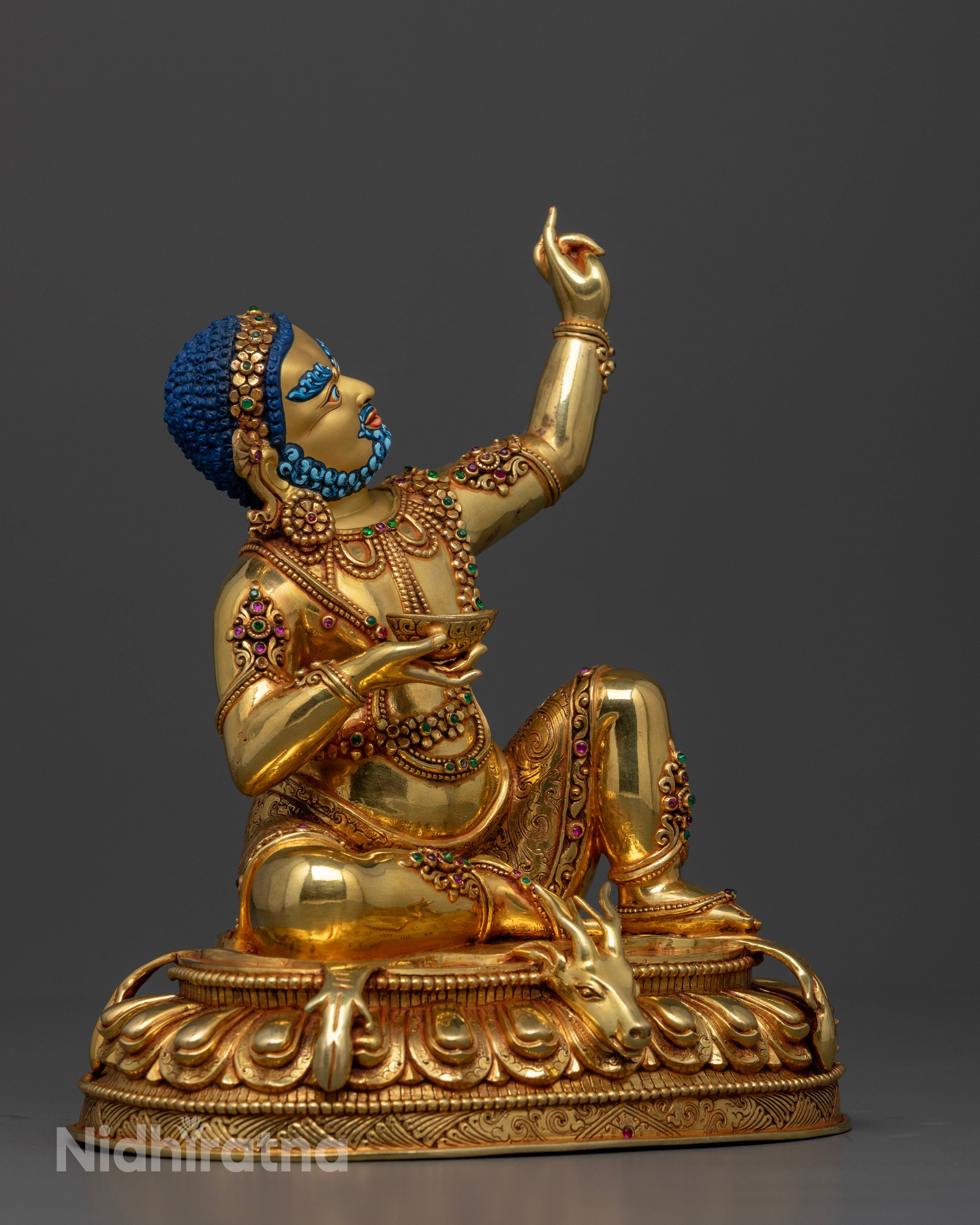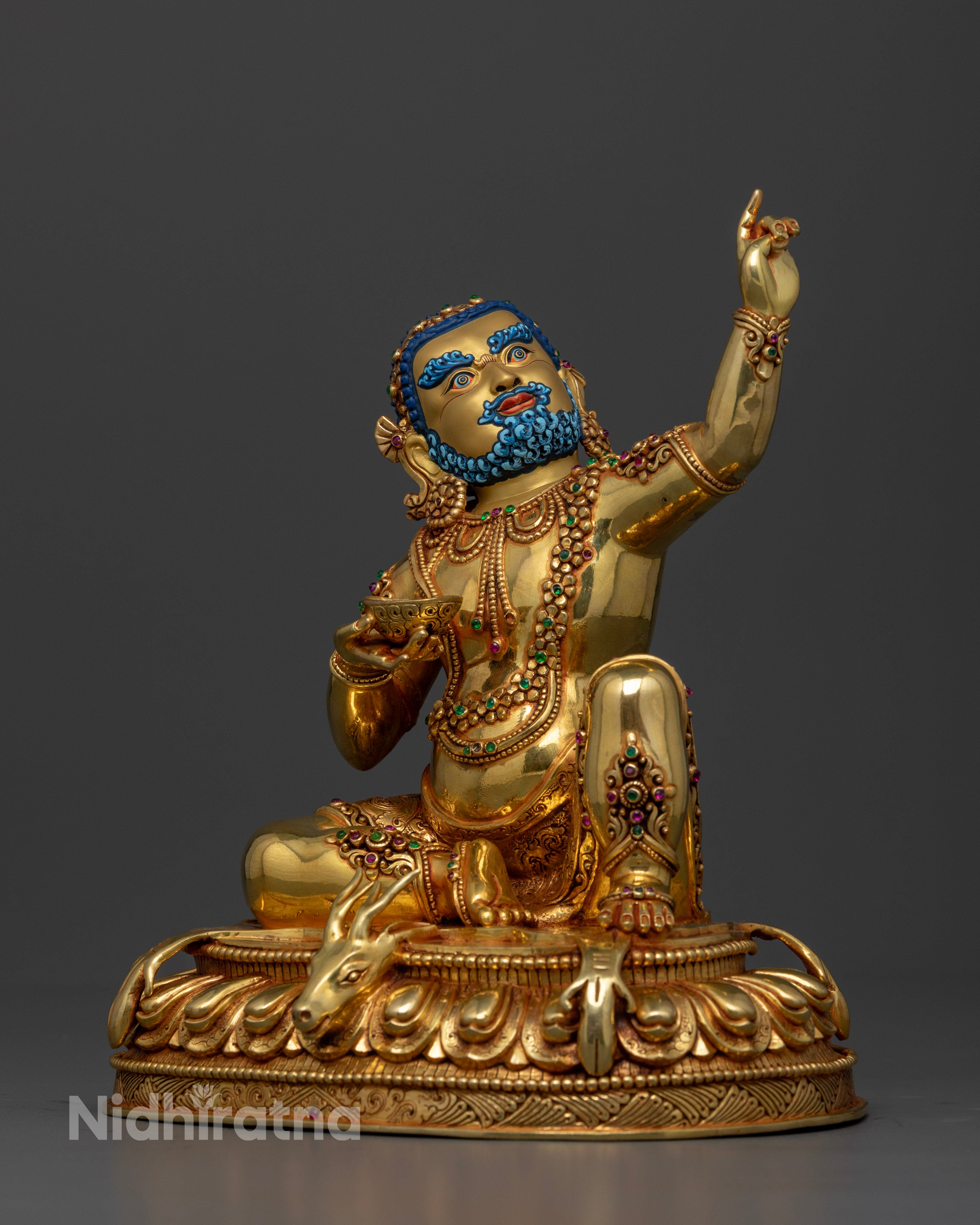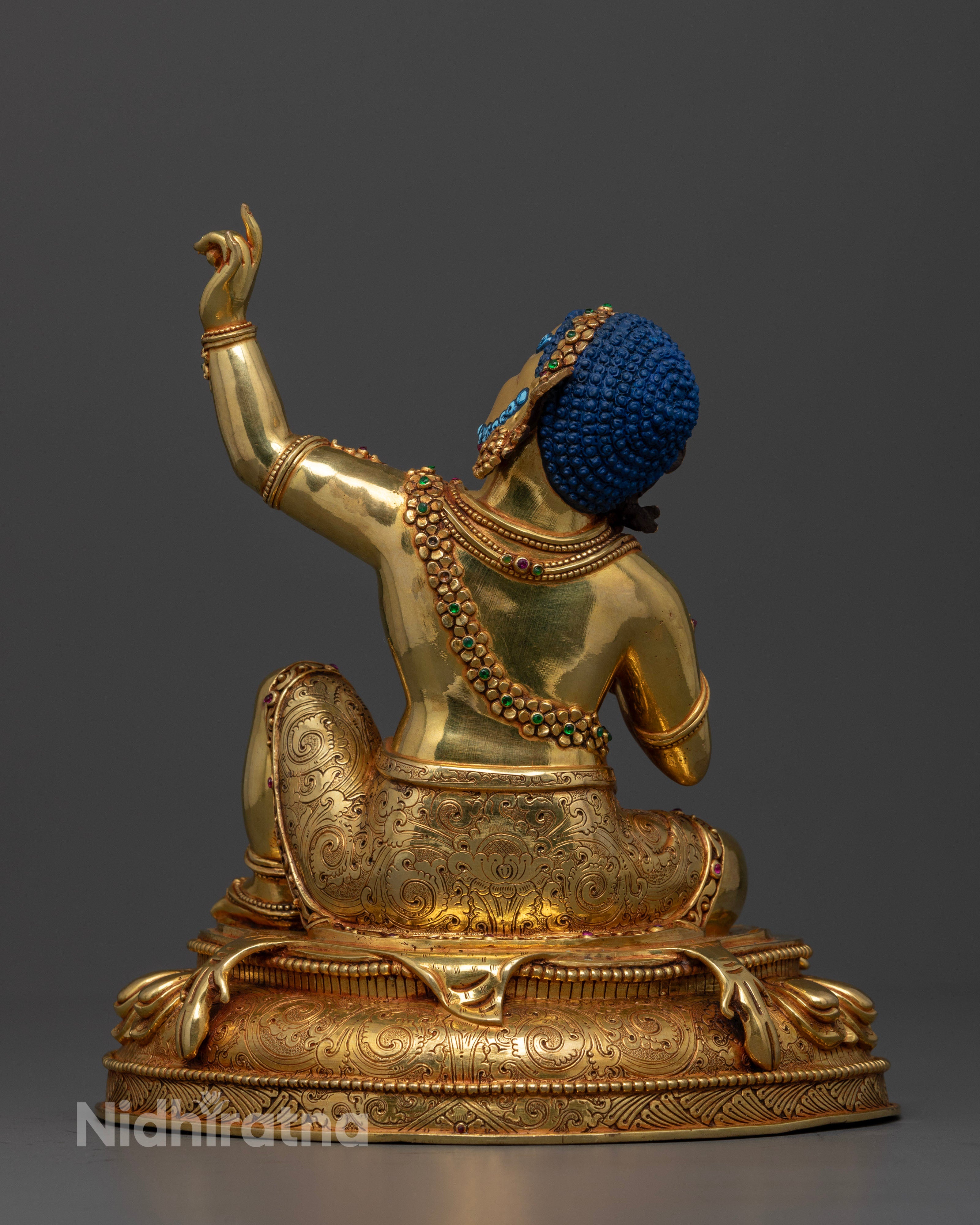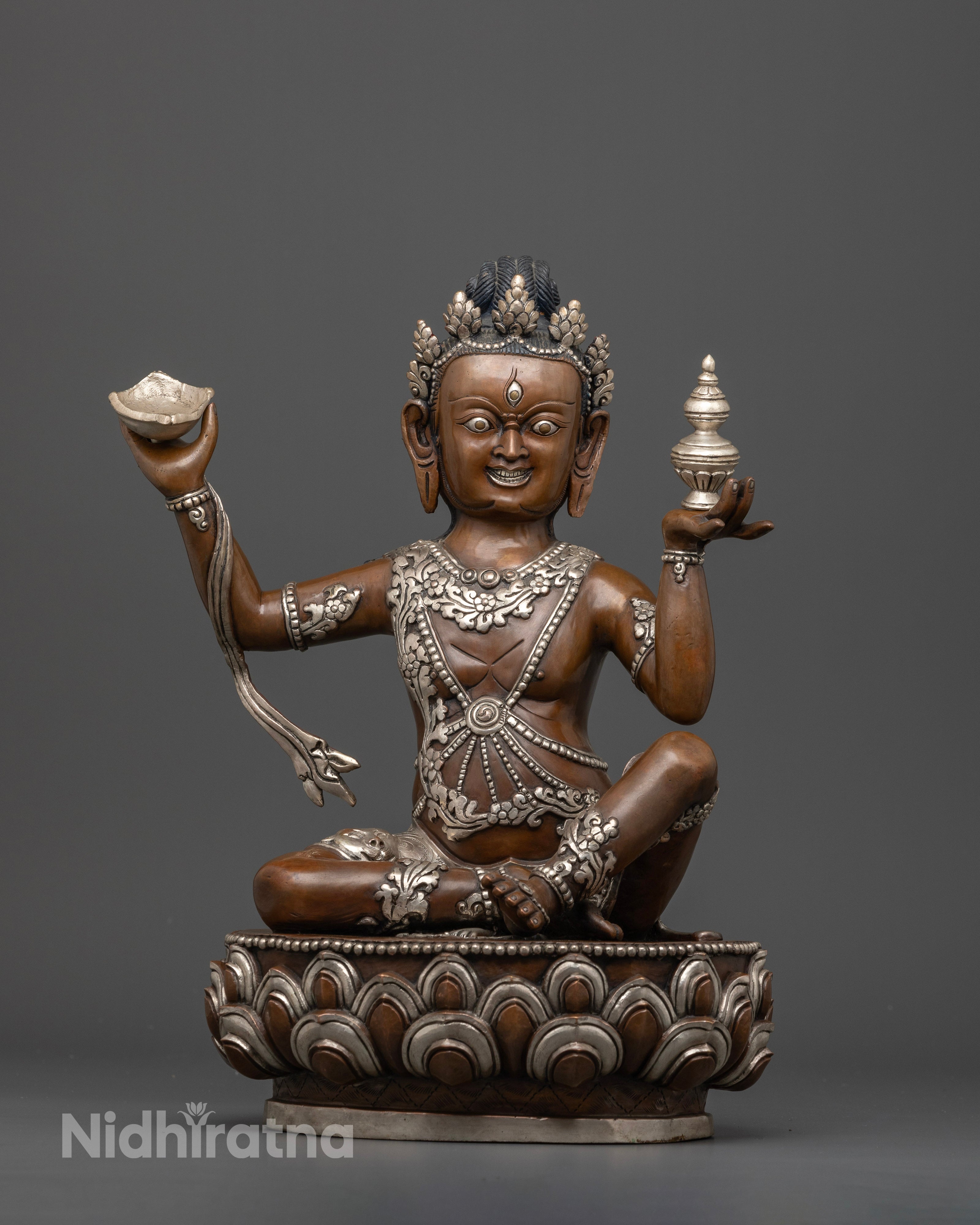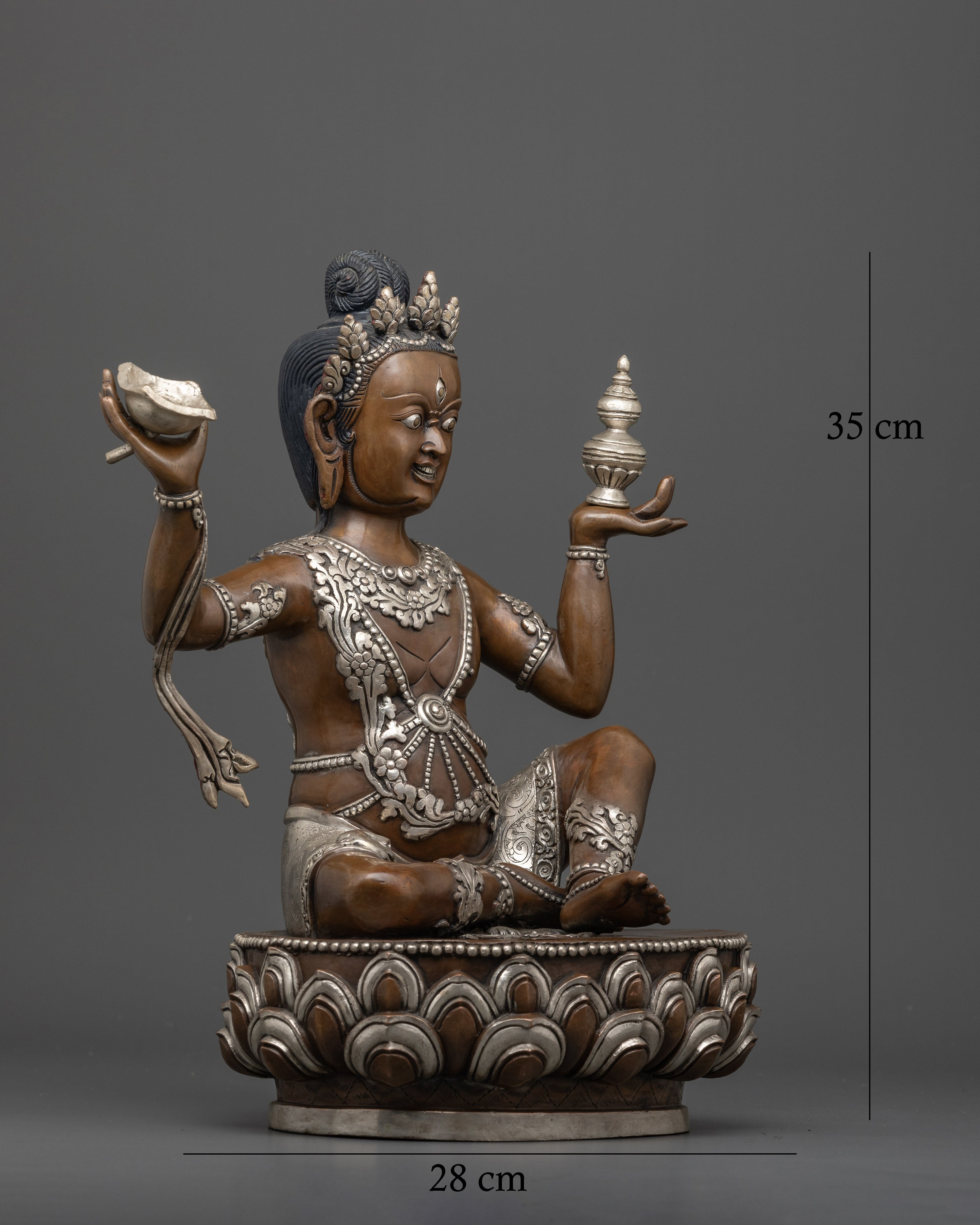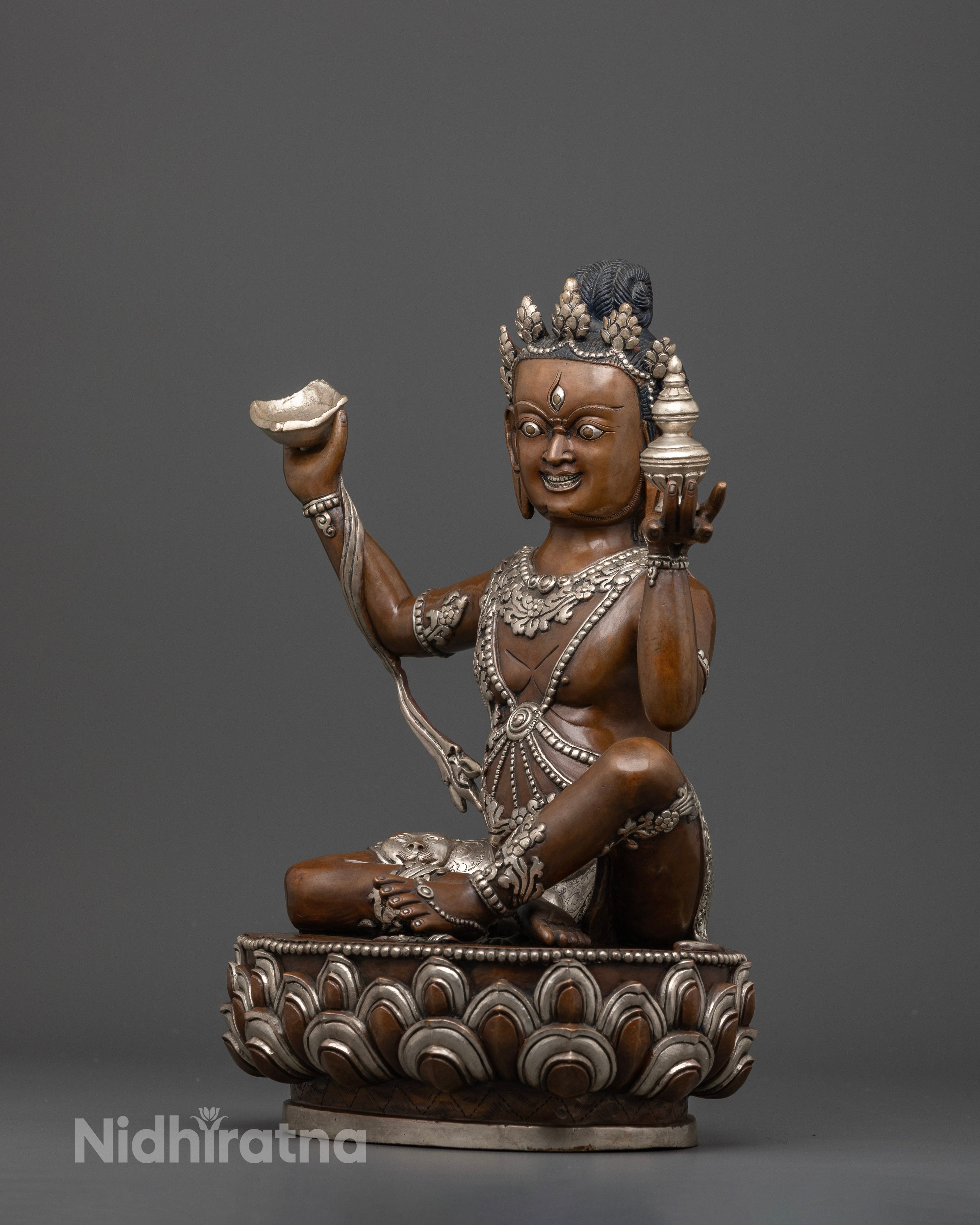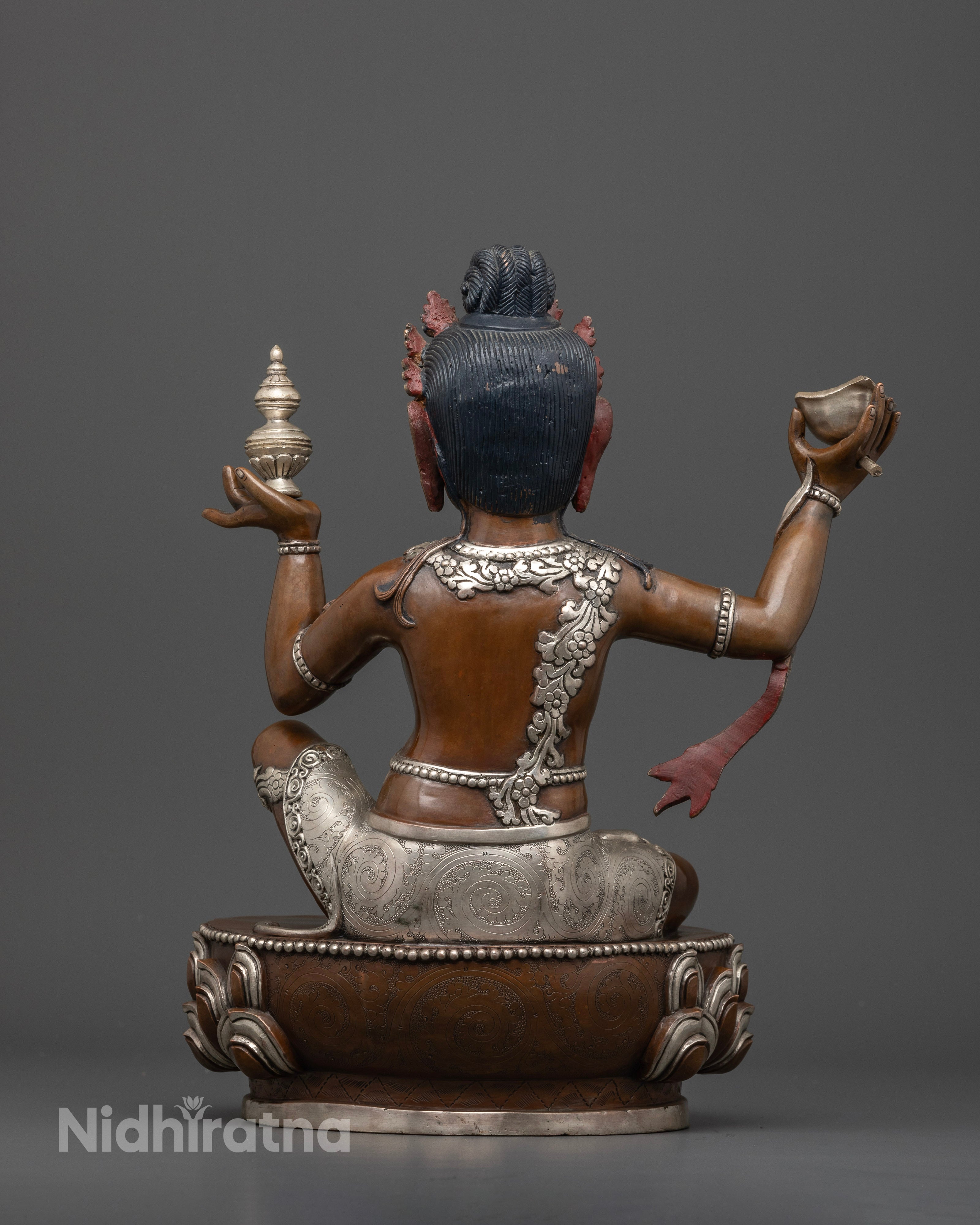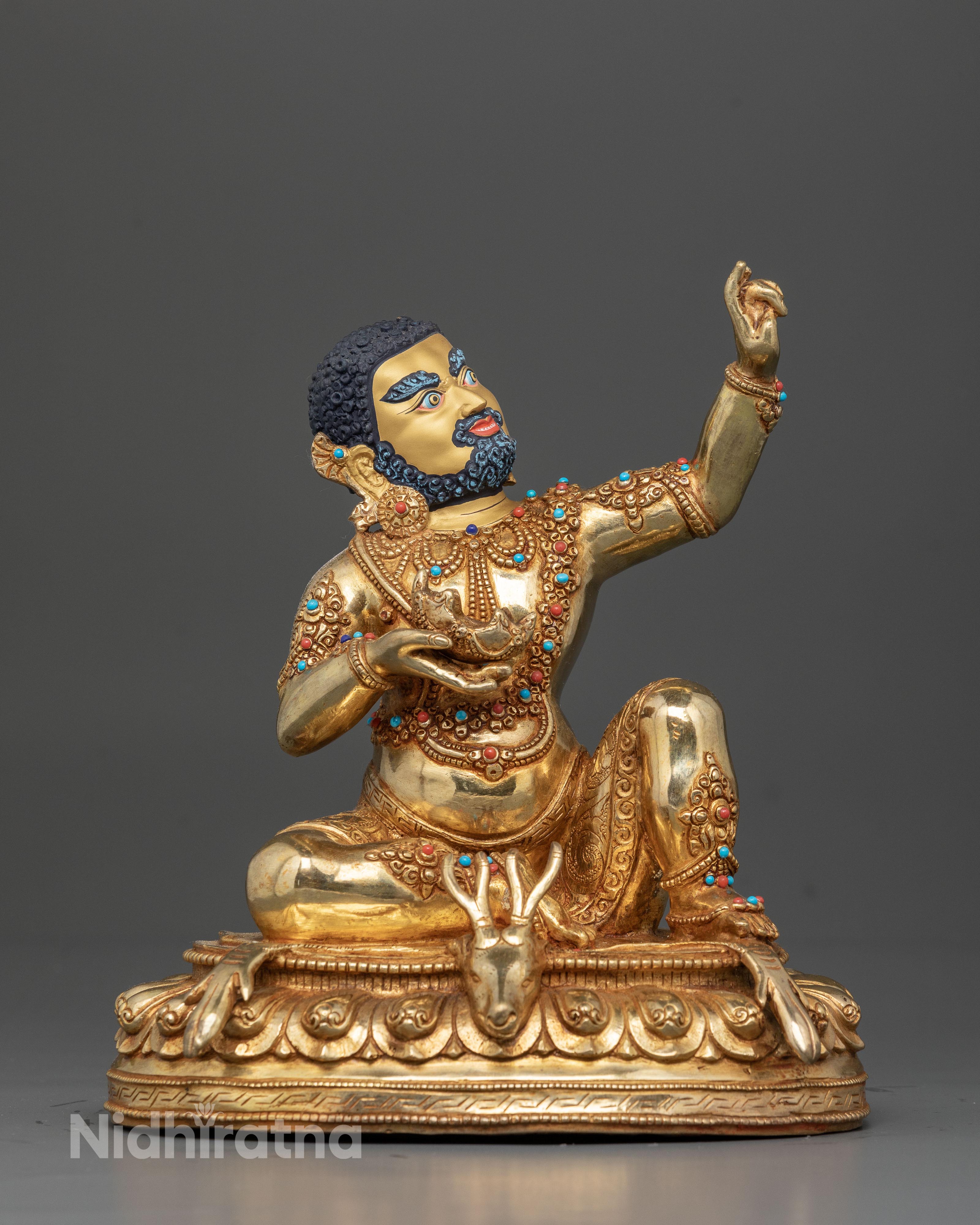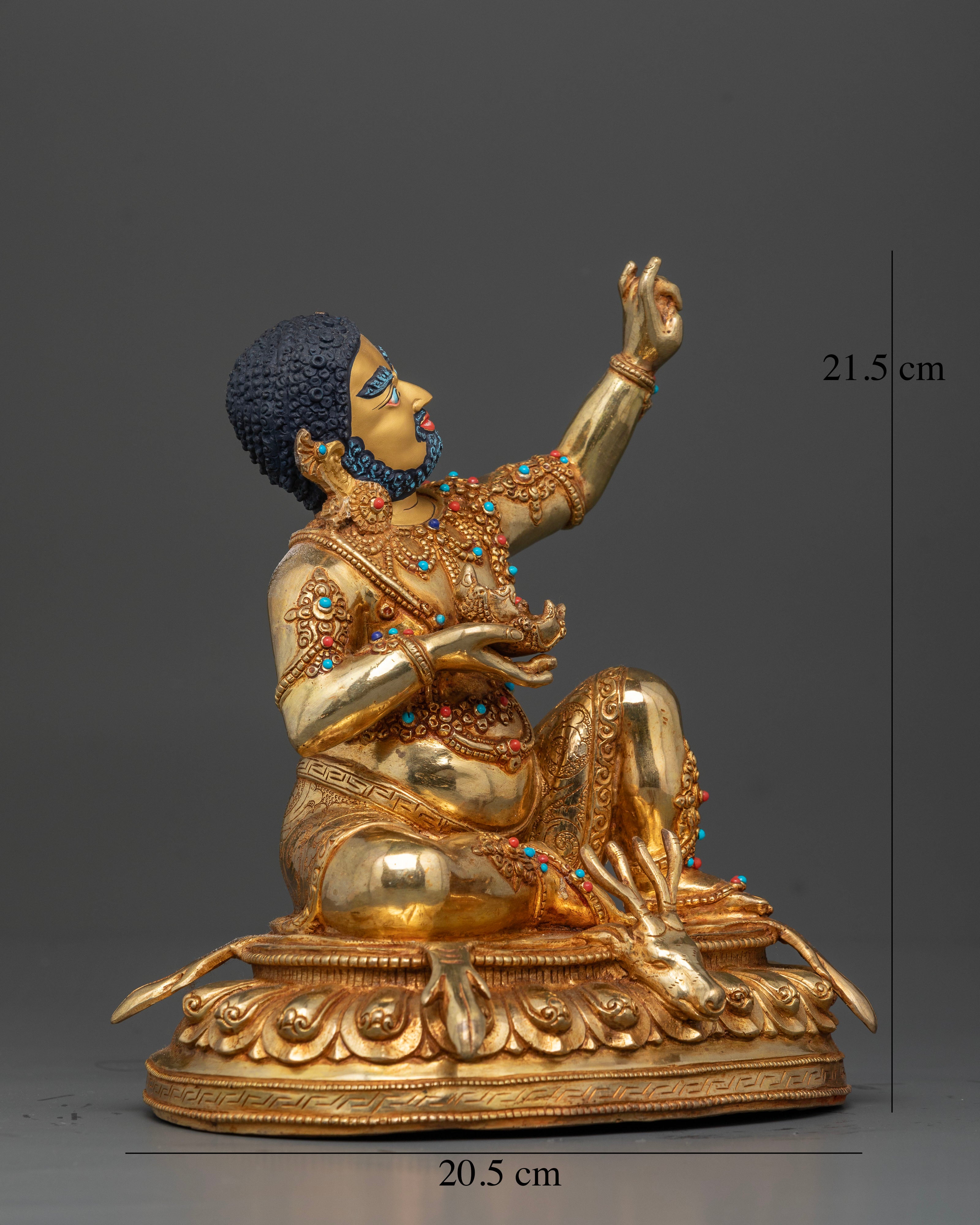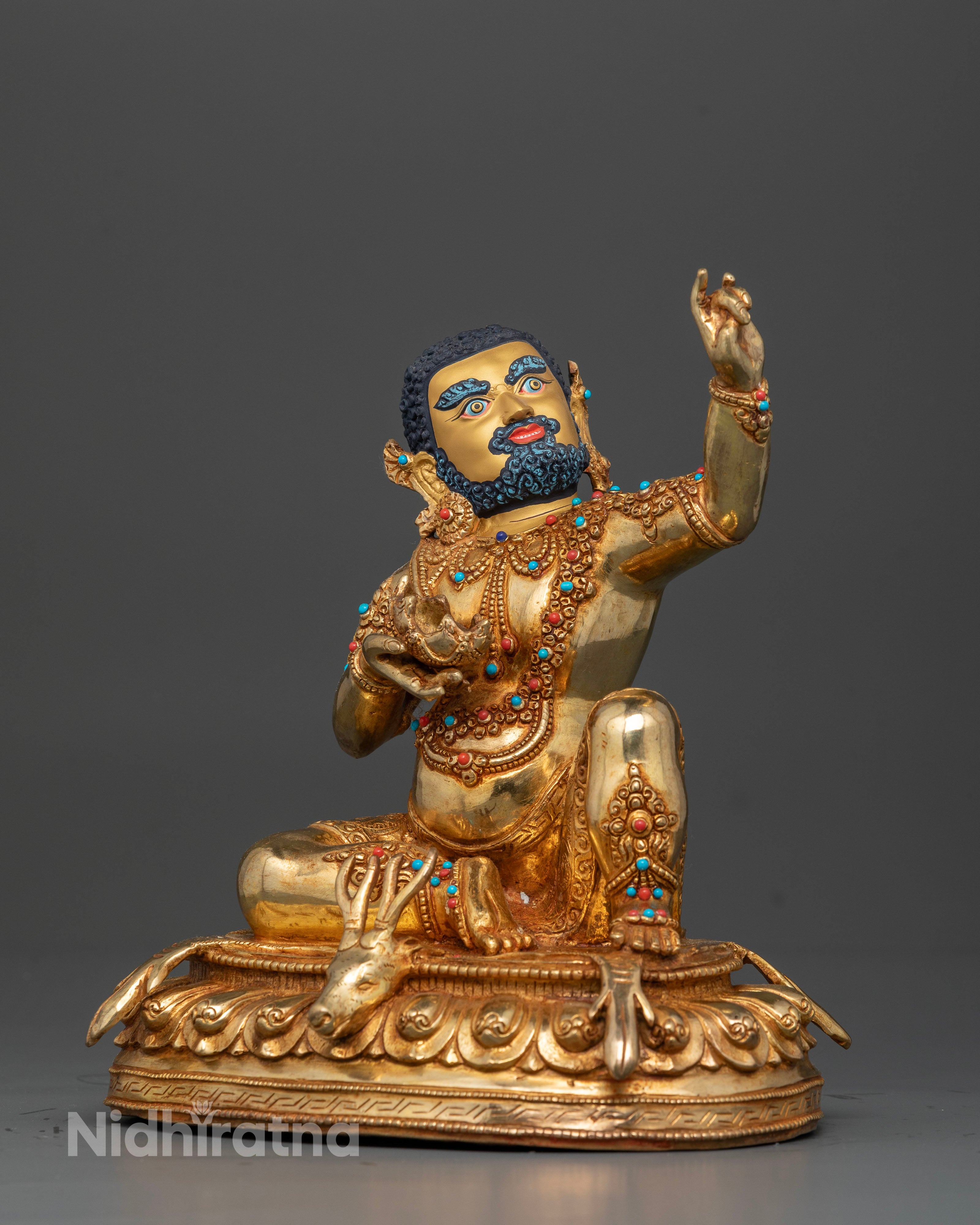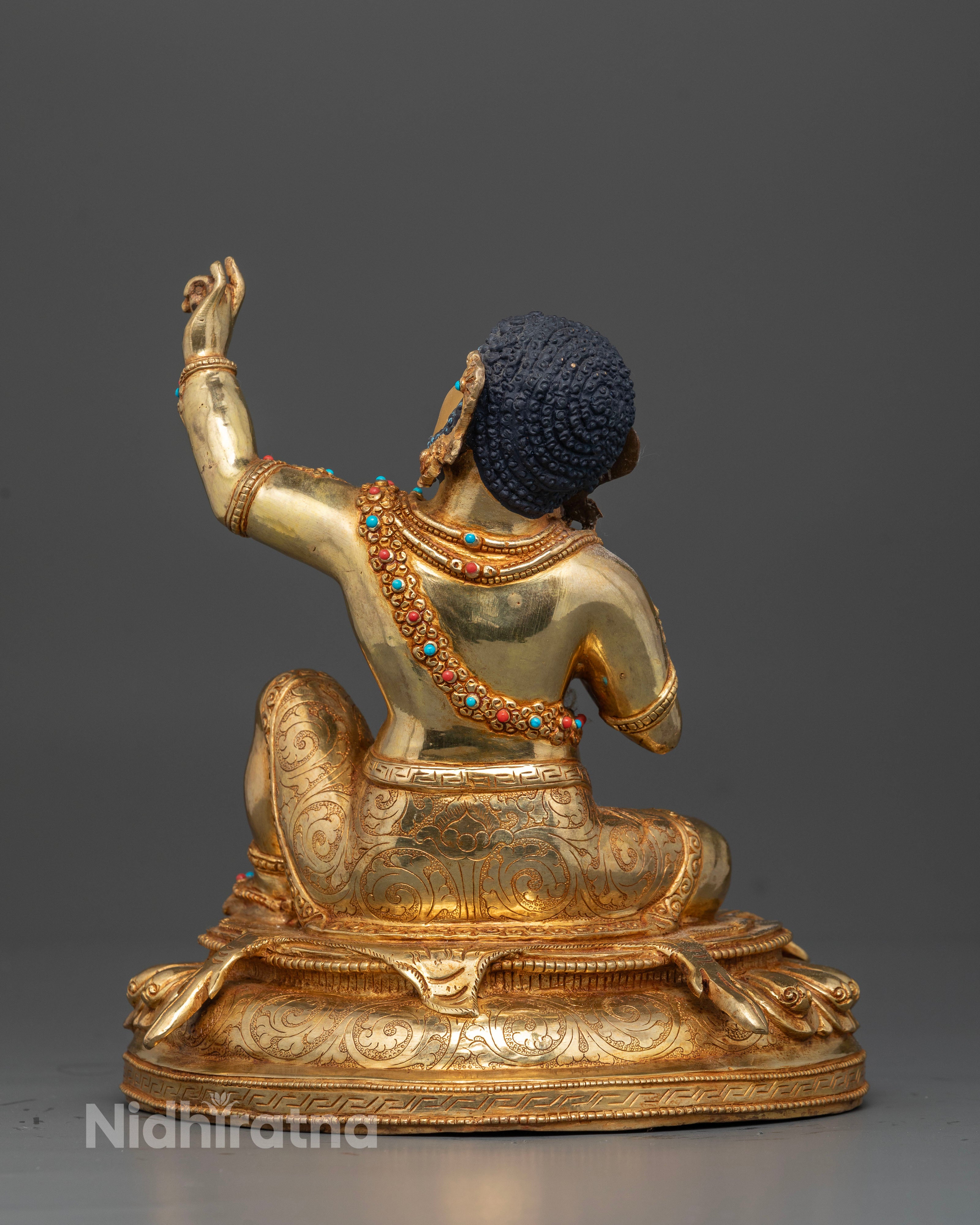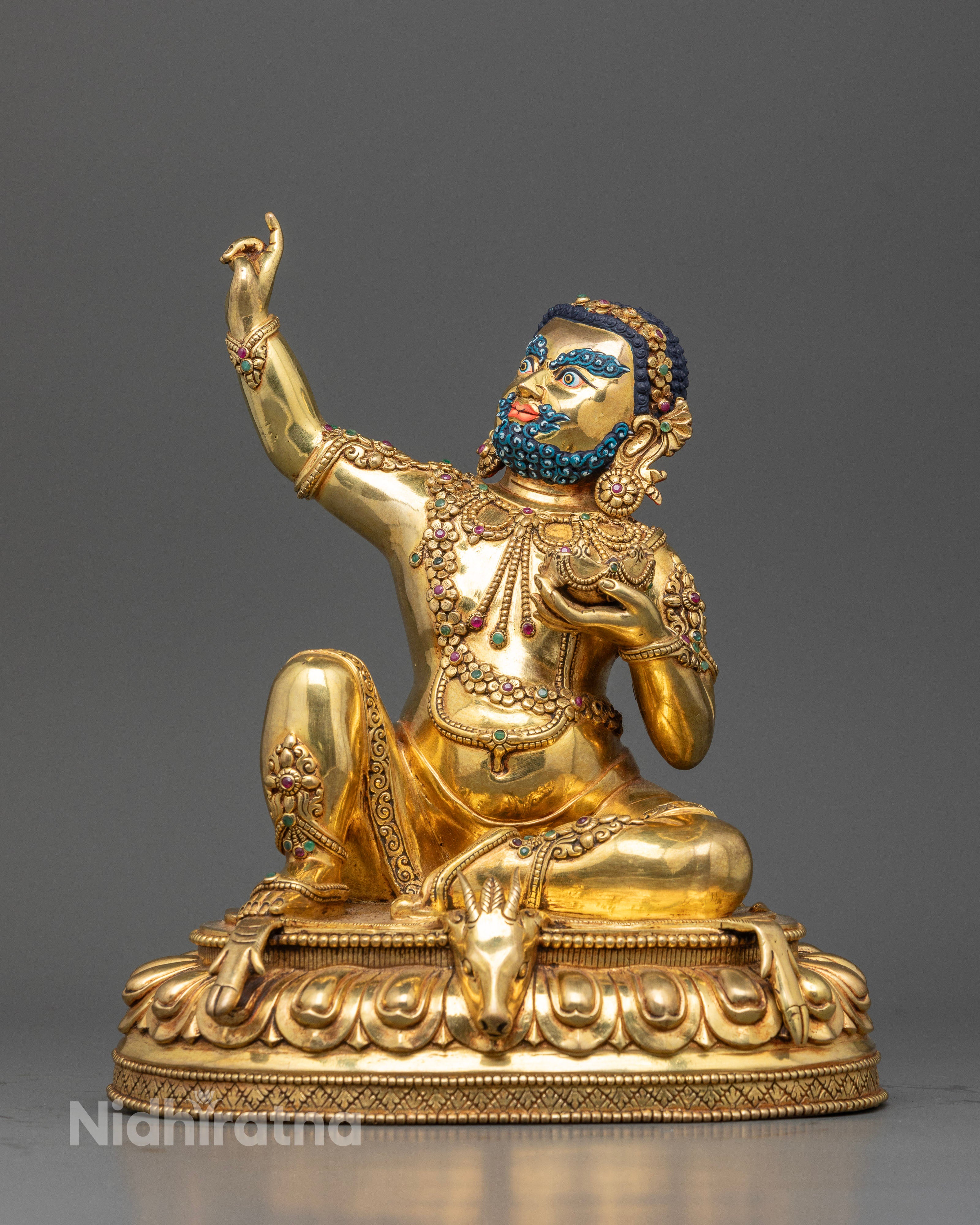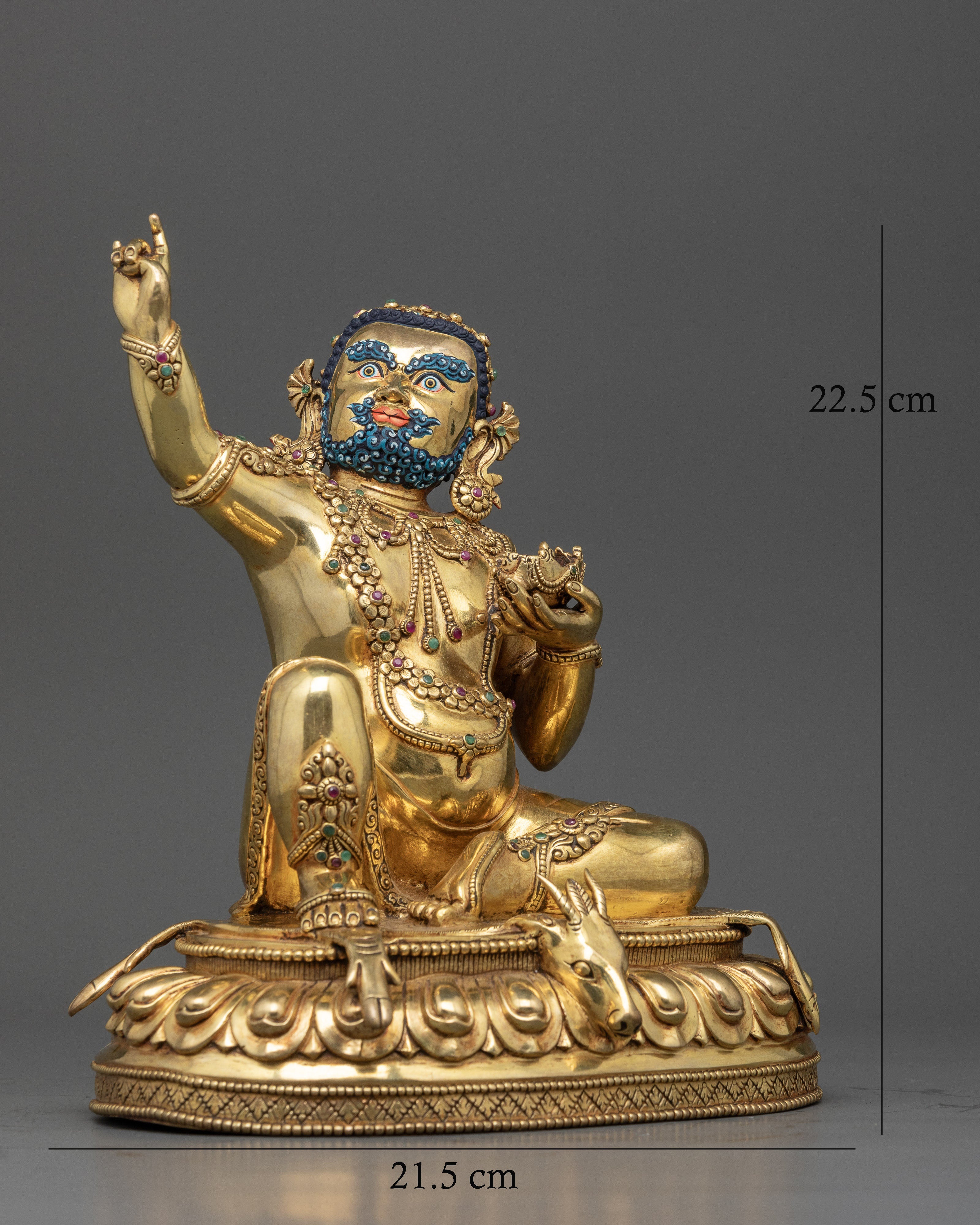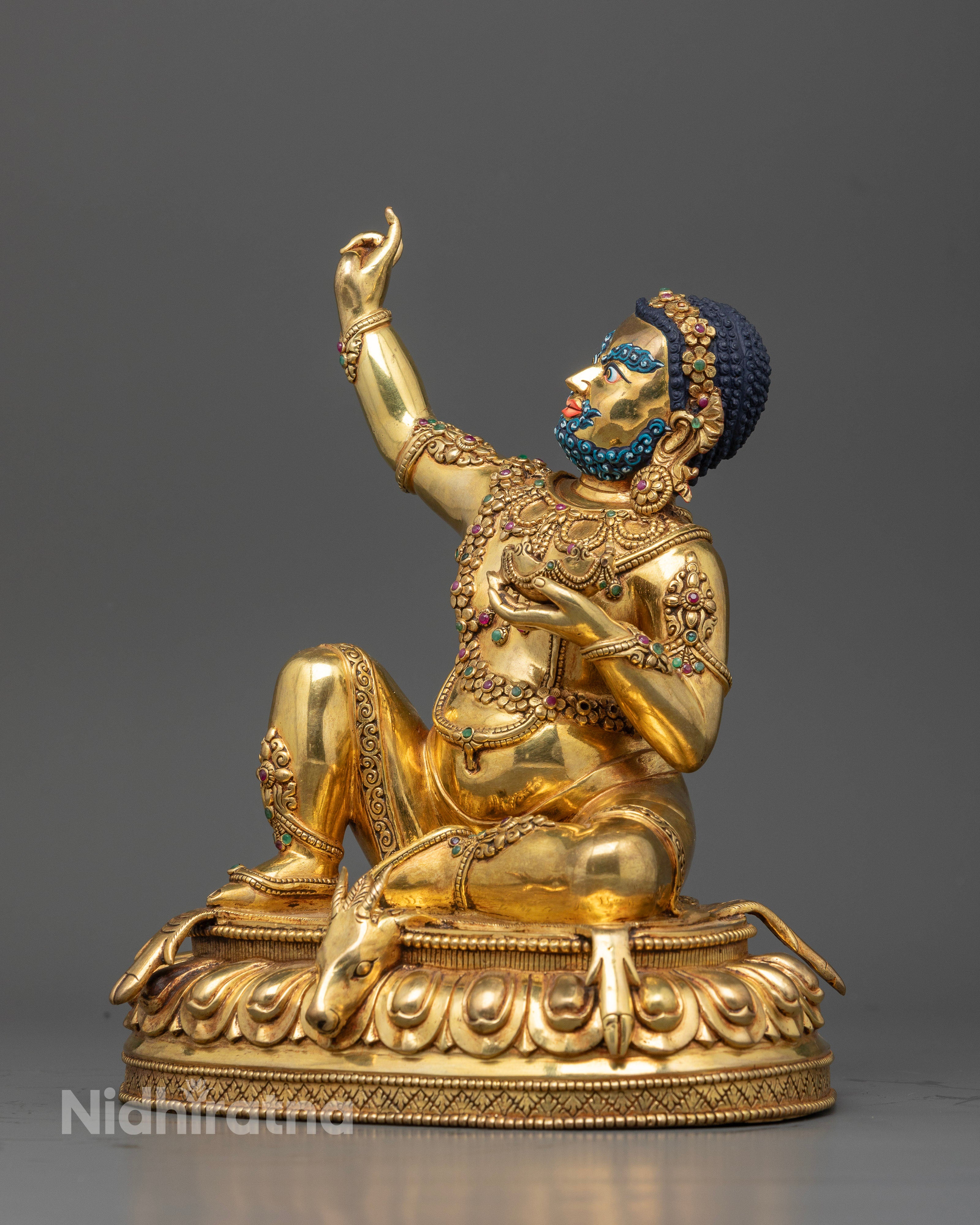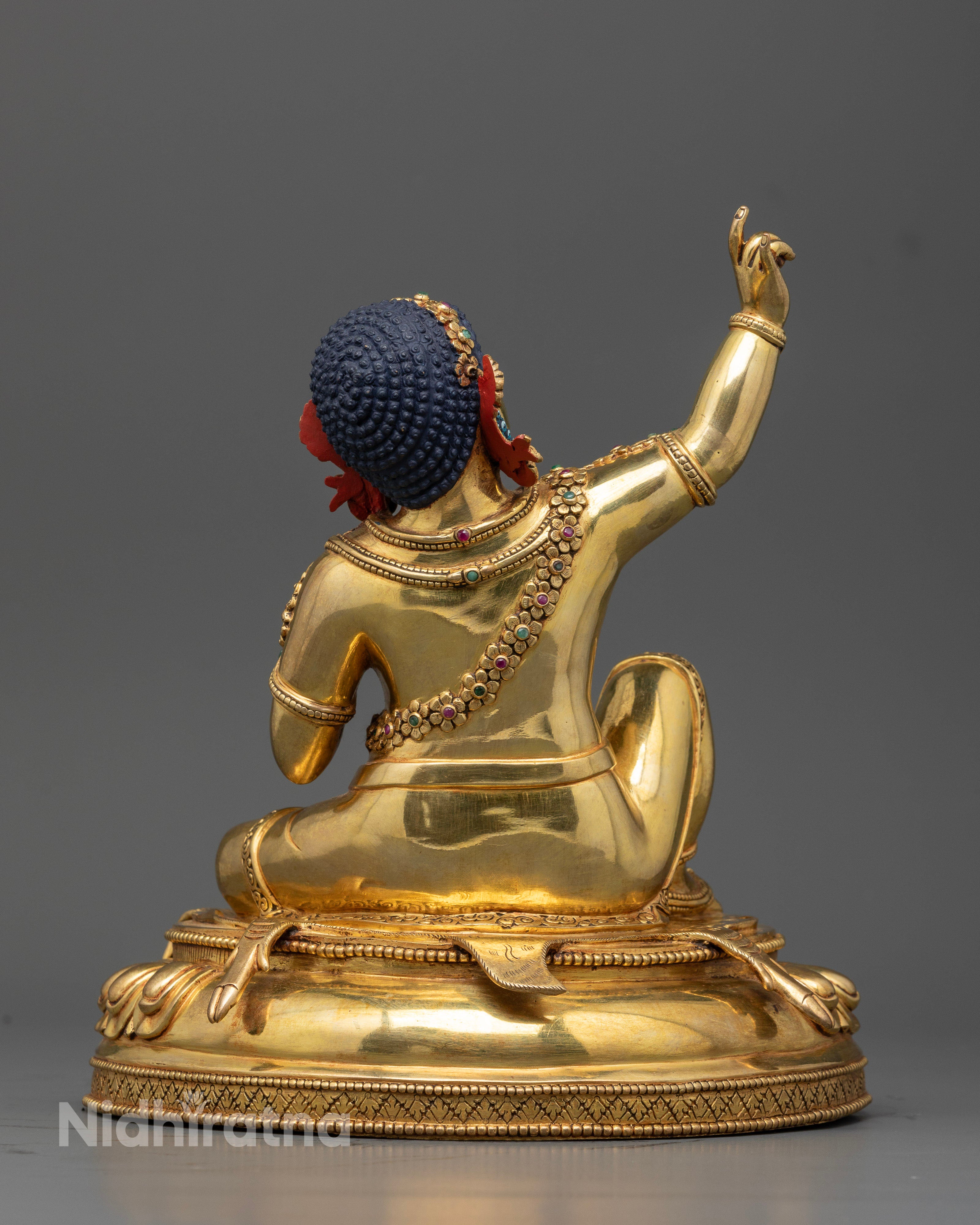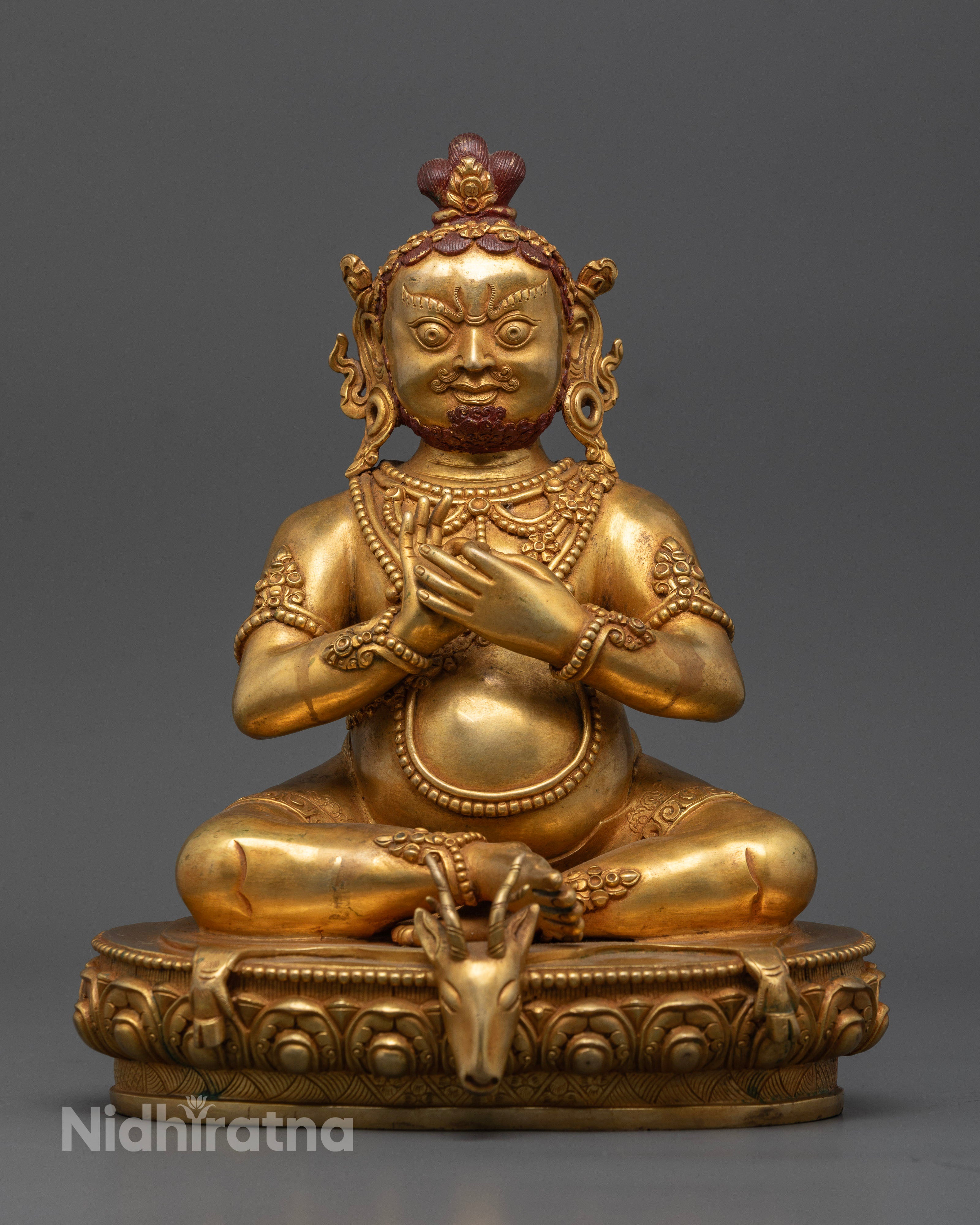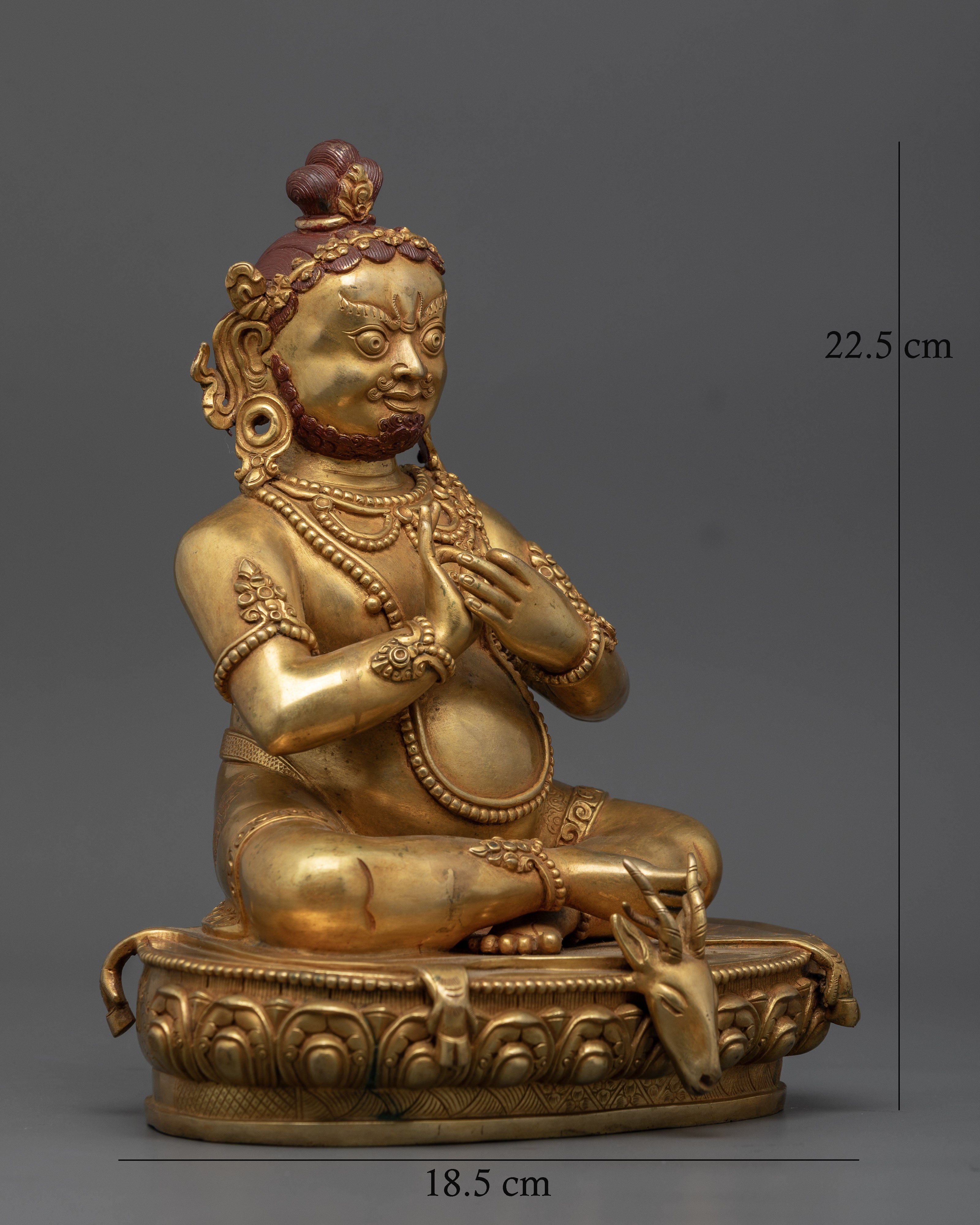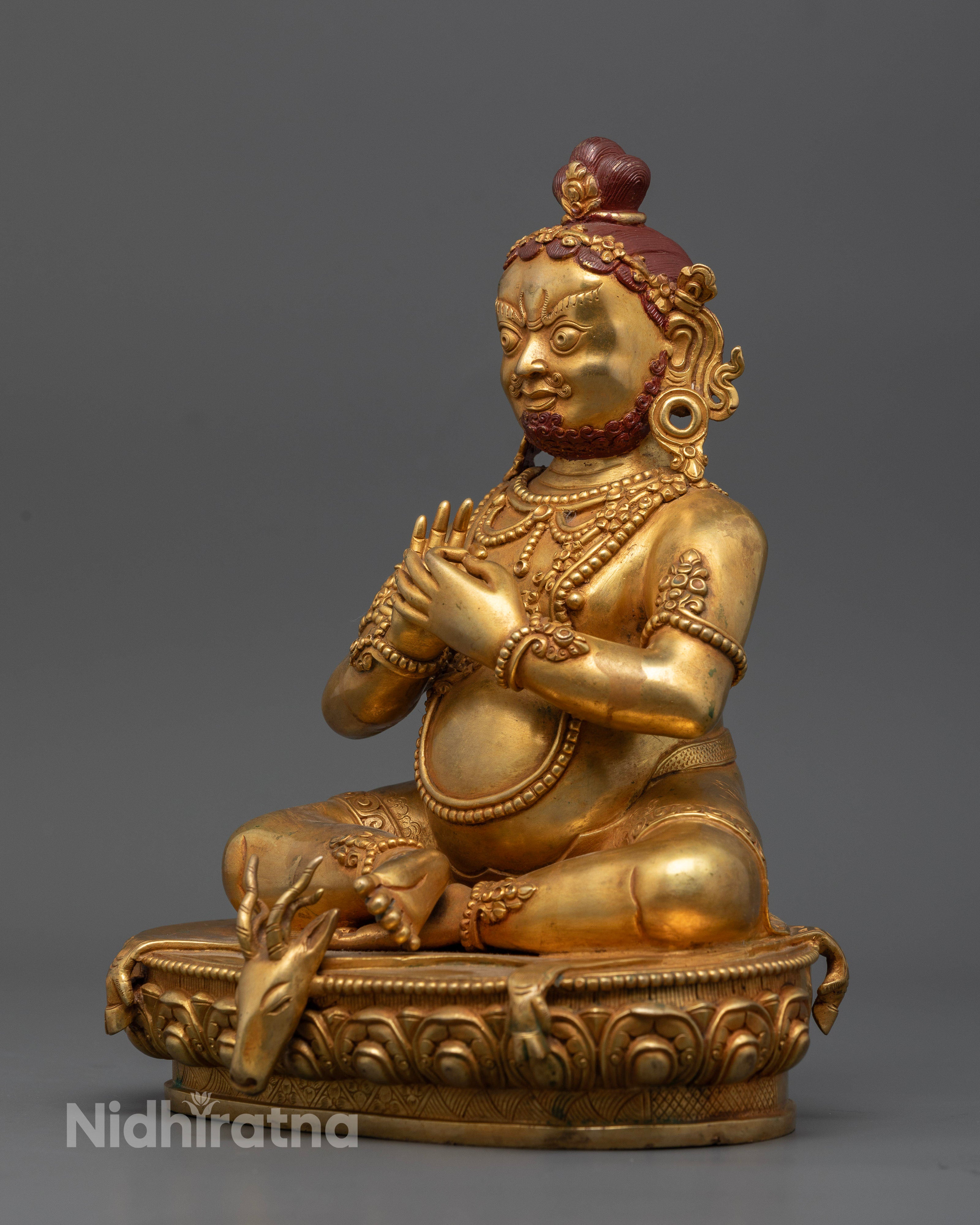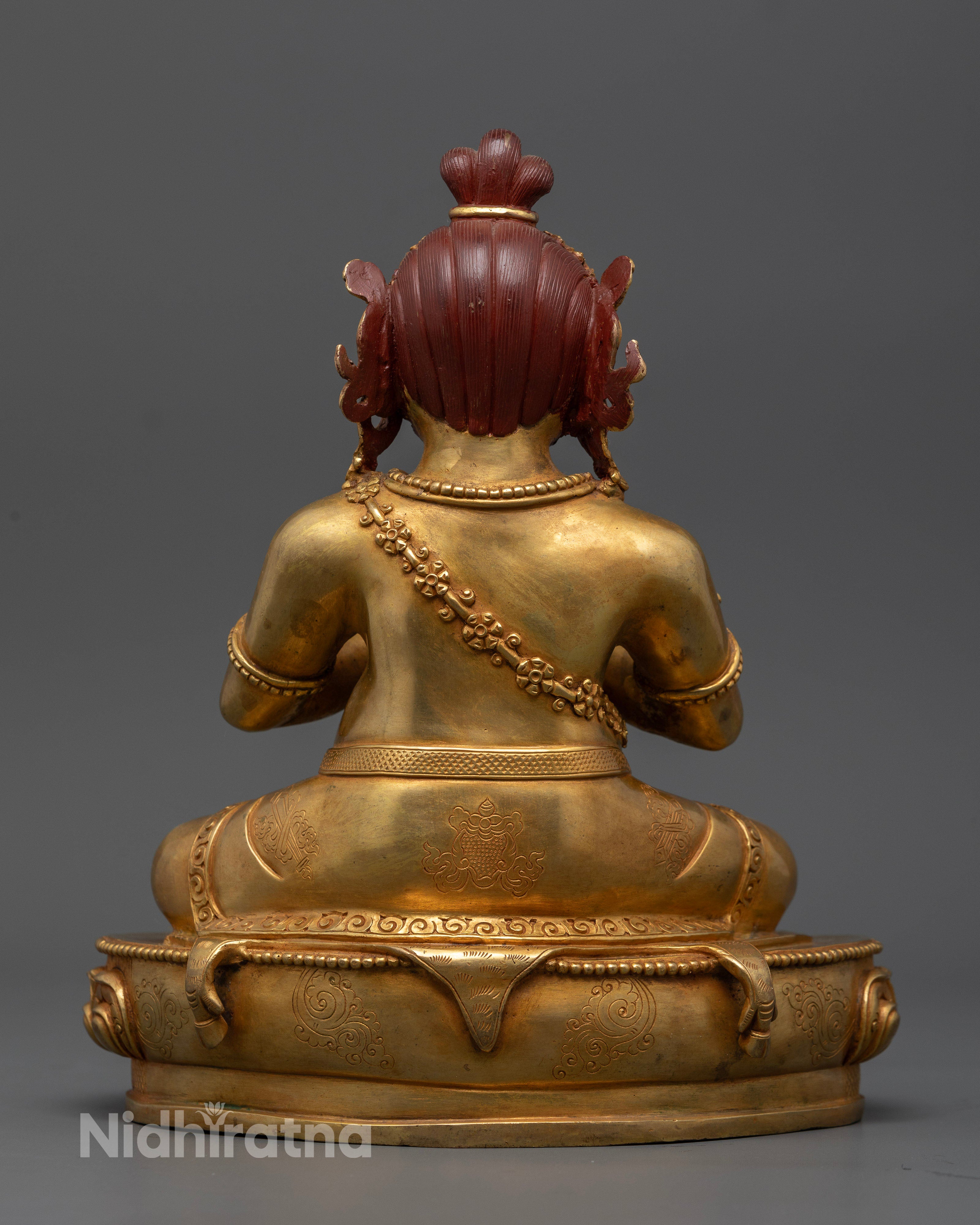Mahasiddha Virupa Statue | Traditional Himalayan Buddhist Sage Sculpture
Red Hued Virupa Statue | Spiritual Sculpture for Spiritual Altars
Mahasiddha Virupa Statue | Handmade Statue of Buddhist Tantric Sage
Virupaksha statue | Handmade Lokapala Protector
Virupaksha Statue: The Guardian Deity of Wisdom
Virupaksa Statue: The Fierce Guardian of Buddhist Wisdom
Handcrafted Virupaksha Statue: Guardian of the Earth
Enlightened Yogi Virupa Statue
Nidhiratna's Virupa Statue: The Sage of Transformation and Spiritual Mastery
Nidhiratna's Virupa statue is a profound representation of one of the most revered yogis in the history of Vajrayana Buddhism. Virupa, a master who transcended conventional understanding and attained supreme spiritual realization, embodies the path of transformation and the ultimate liberation from samsara. His image is a powerful symbol of devotion, discipline, and the profound wisdom necessary to break through the illusions of the material world. Crafted with exceptional skill, this statue brings to life the legacy of Virupa’s teachings and serves as a reminder of the transformative potential inherent in every practitioner.
Made of copper and gold gilded, the Virupa statue is meticulously designed to reflect his deep spiritual significance. Every detail of the statue speaks to his powerful presence as a realized being who transcended both the mundane and the sacred realms. The luminous golden color symbolizes the enlightenment that Virupa attained through rigorous practice and devotion, while the copper base provides a grounding energy that connects the wisdom of the enlightened world with the physical realm.
Virupa’s Iconography:
Virupa is often depicted in a meditative or dynamic posture, symbolizing his deep spiritual insight and practice. His figure exudes an aura of serenity and wisdom, yet his expression also conveys a profound sense of intensity, reflecting his deep commitment to spiritual realization and the transformative power of tantra. He is frequently shown with his left leg raised and his right leg in a seated posture, signifying his ability to transcend worldly attachments and walk the path of liberation.
His hands often hold ritual implements such as the vajra (symbolizing indestructible wisdom) and a bell (representing the wisdom of emptiness). Virupa is also depicted with a khattvanga (ritual staff) in his right hand, symbolizing his mastery over spiritual obstacles and his ability to cut through ignorance. His skull cup (kapala), filled with nectar, signifies his transmutation of ordinary experiences into the nectar of enlightenment.
In some depictions, Virupa is shown with a flame emanating from his body, signifying the fire of his realization that burned away all mental obscurations and attachments. His naked body in many representations symbolizes his total renunciation of worldly desires and his complete commitment to spiritual purity. This act of renunciation is not one of asceticism but of transcendence—Virupa’s body is a symbol of his freedom from ego and his complete dedication to the Dharma.
Virupa’s hair is often depicted as matted, indicating his status as a renunciant and his connection to the traditions of yogic discipline. His wrathful expression in some statues reflects his fierce determination to destroy ignorance and defilements, while his overall posture remains one of serene focus and unshakable devotion to his spiritual path.
Virupa’s Role in Vajrayana Buddhism:
Virupa is one of the great Mahasiddhas (great yogis) of Vajrayana Buddhism, and his life story and teachings have inspired countless practitioners on the path of tantric practice. Born in India and later attaining full enlightenment through intense meditation and tantric rituals, Virupa is known for his ability to transform ordinary experiences into profound wisdom and realization. He is particularly revered for his direct transmission of tantric teachings, which he passed down to future generations of practitioners.
Virupa’s practices often involved overcoming obstacles and transmuting negative experiences into wisdom. His teachings emphasize the importance of direct experience over intellectual knowledge and the transformative potential of deep meditation, mantra recitation, and ritual. Virupa’s life serves as an example of the path of inner alchemy, wherein a practitioner uses spiritual practice to purify the mind and body and to achieve the ultimate realization of Buddhahood.
As one of the key figures in the Kagyü and Nyingma lineages of Tibetan Buddhism, Virupa’s teachings continue to play a significant role in guiding modern practitioners along the path of tantric realization. His influence extends beyond the confines of any one tradition, making him a universally respected figure in Vajrayana Buddhism.
Virupa’s Mantra:
Virupa’s mantra, "Om Vajra Virupa Hum", is a powerful invocation of his wisdom and transformative power. Each syllable of the mantra carries a profound meaning:
- Om: Represents the all-encompassing energy of the universe, the essence of enlightenment.
- Vajra: Symbolizes the indestructible wisdom that cuts through ignorance.
- Virupa: Represents the name and essence of the yogi, signifying transformation and realization.
- Hum: Represents the inner transformation and realization of Buddhahood.
The recitation of this mantra is a central part of Virupa's sadhana (spiritual practice) and serves to invoke his blessings and wisdom. It is used in tantric rituals, meditations, and visualizations, providing the practitioner with the strength to overcome obstacles and gain insight into the nature of reality.
The Transformative Power of Virupa:
Virupa’s teachings and practice emphasize personal transformation. He teaches that it is through intense personal discipline and meditative practice that a practitioner can transcend the limitations of the body and mind, ultimately achieving the realization of Buddhahood. His wisdom lies in his ability to show practitioners that everything can be used as a vehicle for enlightenment, whether it be pleasure, pain, or suffering. By using the six realms of existence and earthly experiences as tools for transformation, Virupa shows that true realization is within everyone’s grasp.
The Virupa statue serves as a reminder of the fierce dedication required on the path of liberation. His image is not only a depiction of an enlightened being but also a reflection of the inner potential each practitioner has to overcome obstacles, purify the mind, and awaken to their true nature.
Virupa is more than a historical figure; he is a symbol of the ultimate path of transformation that lies within all practitioners. Through his image, the Virupa statue offers practitioners the strength, inspiration, and clarity to walk the path of realization, break through the illusion of samsara, and achieve the ultimate liberation of Buddhahood. His teachings remind us that transformation comes not through escape from life, but through complete engagement with it, purifying every moment of existence and transcending the limitations of ego.

